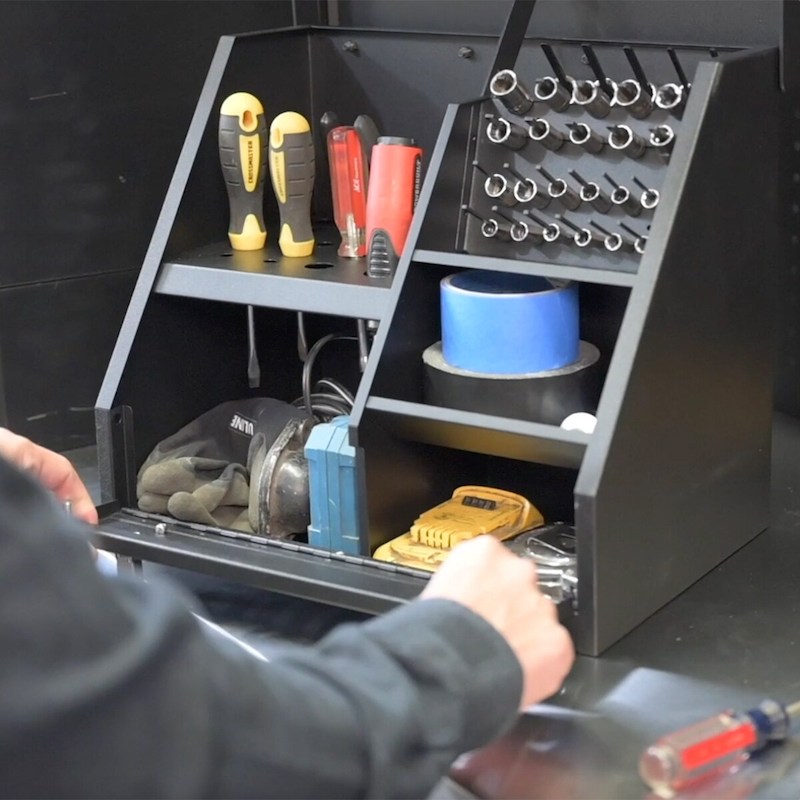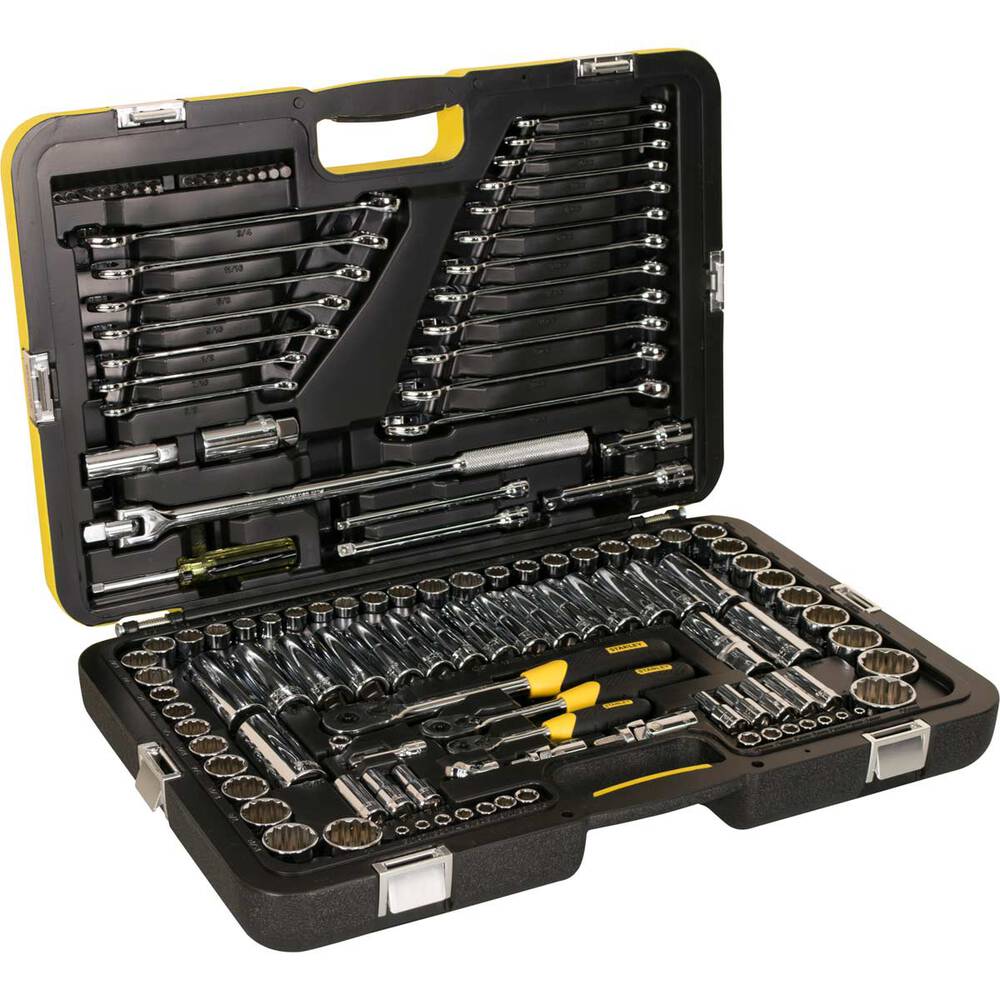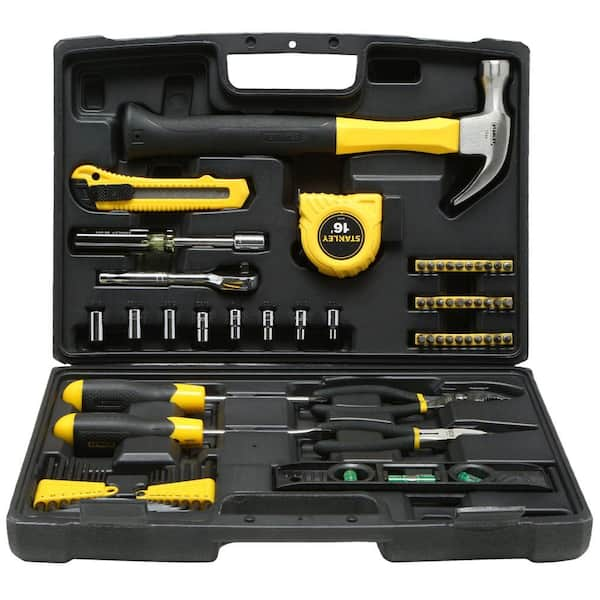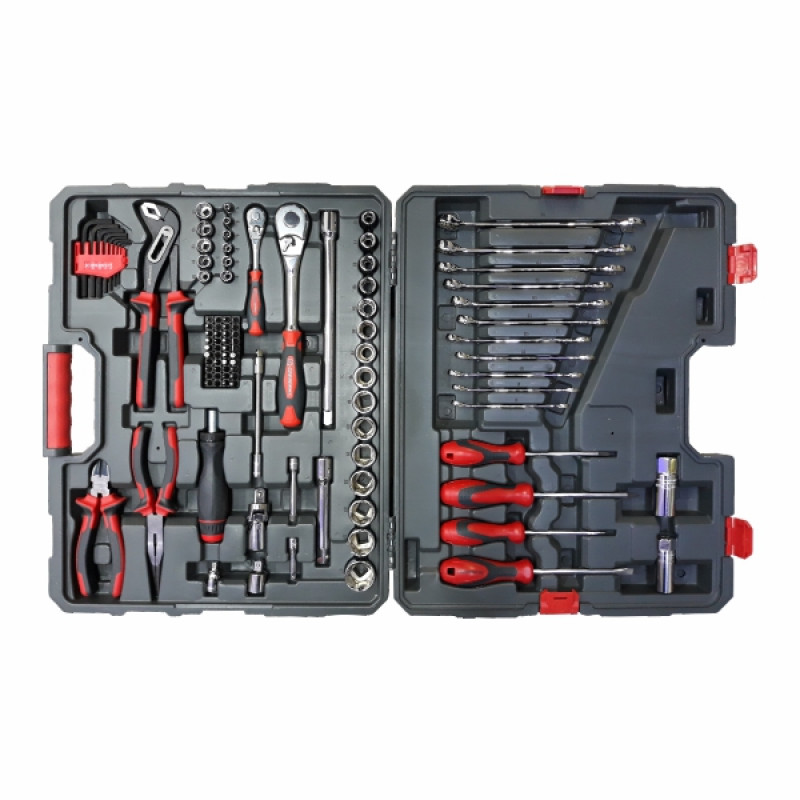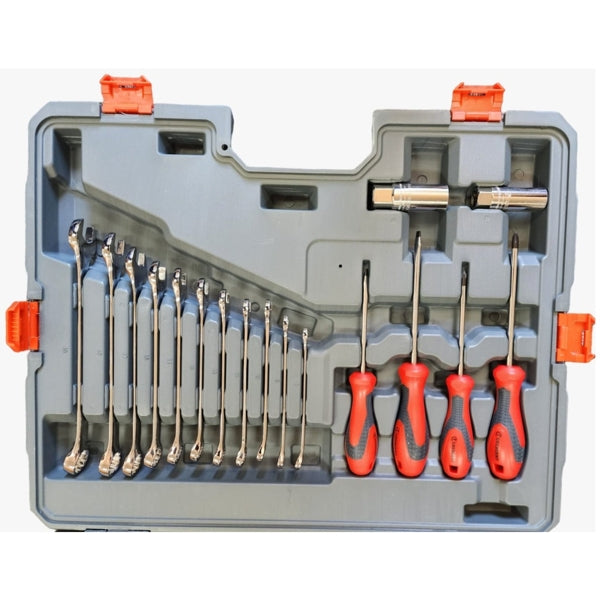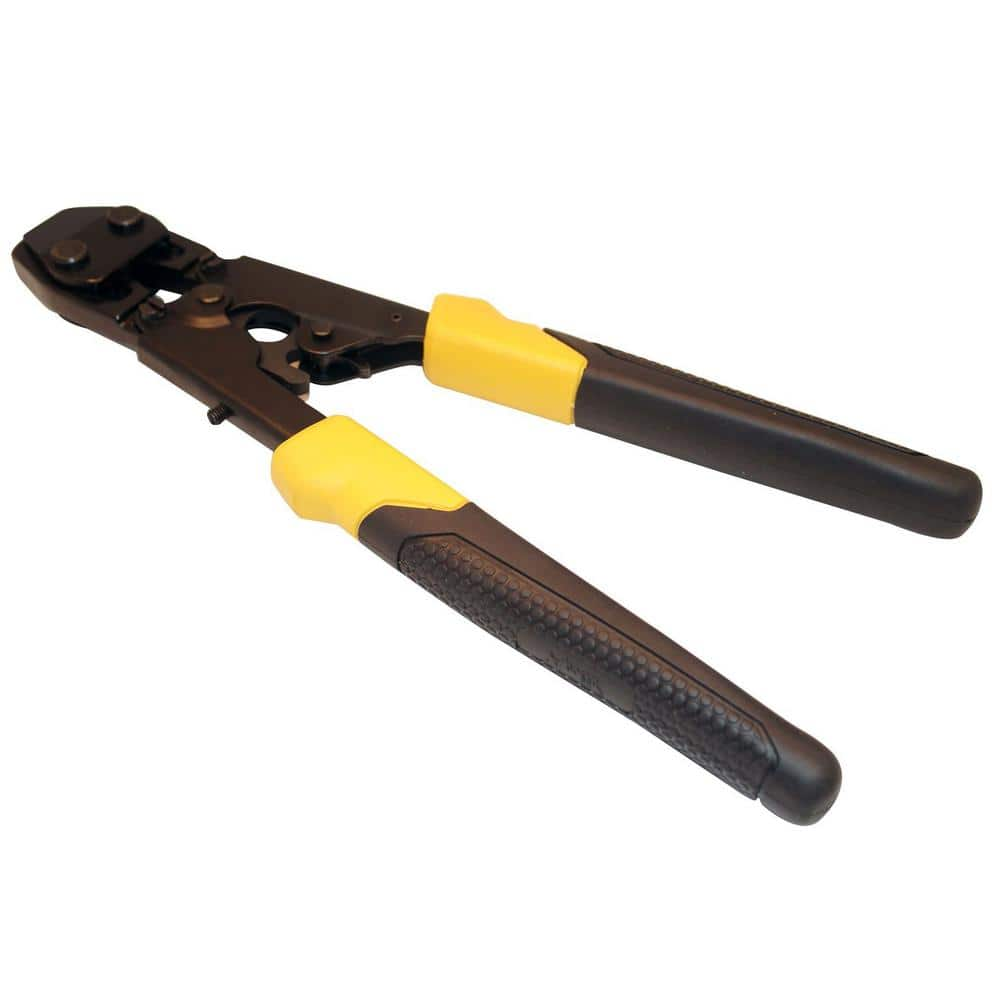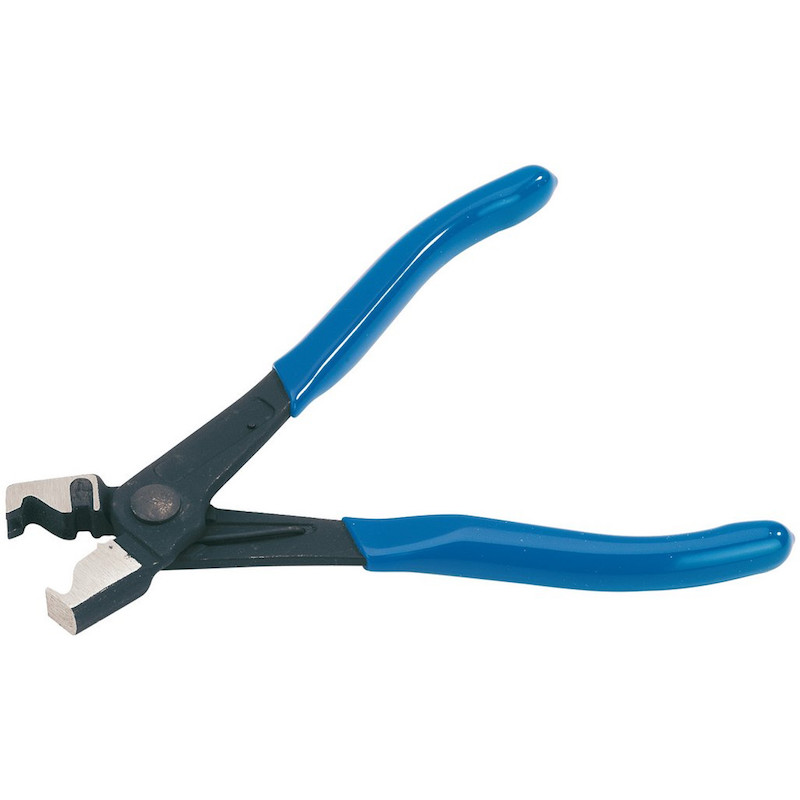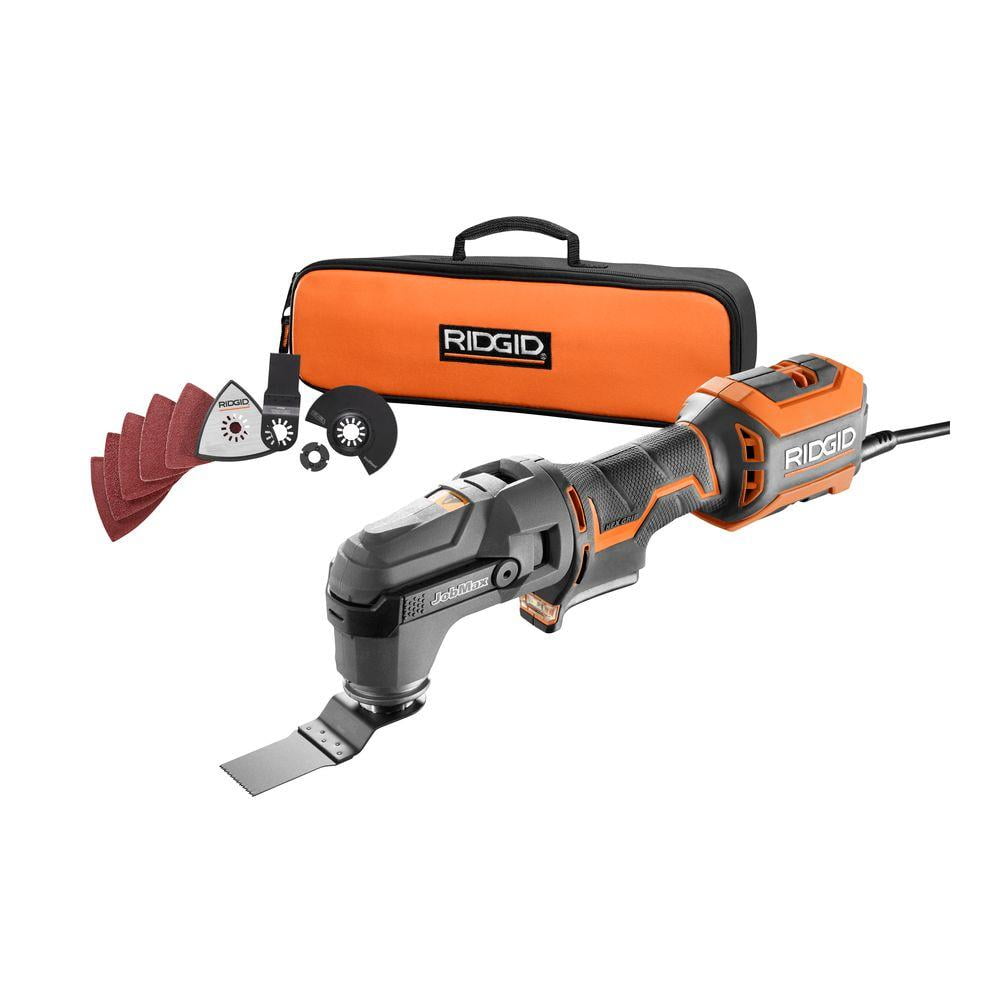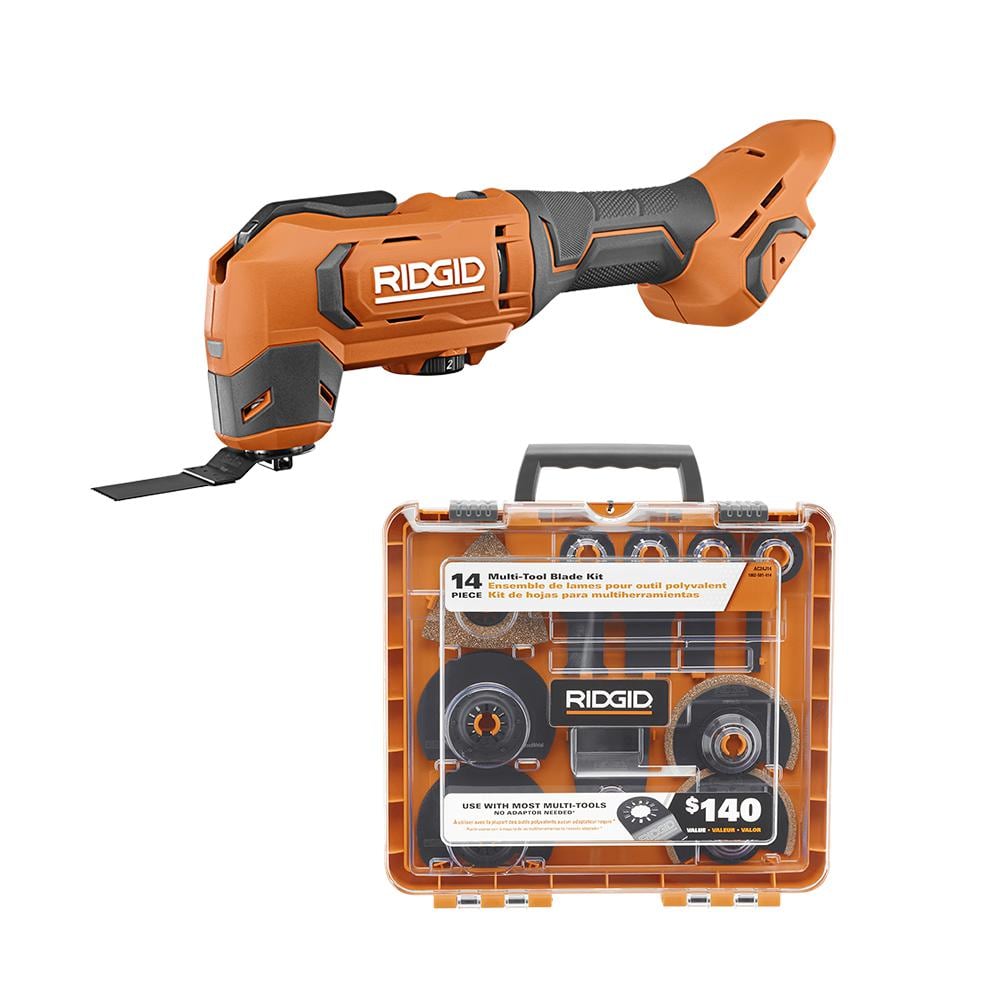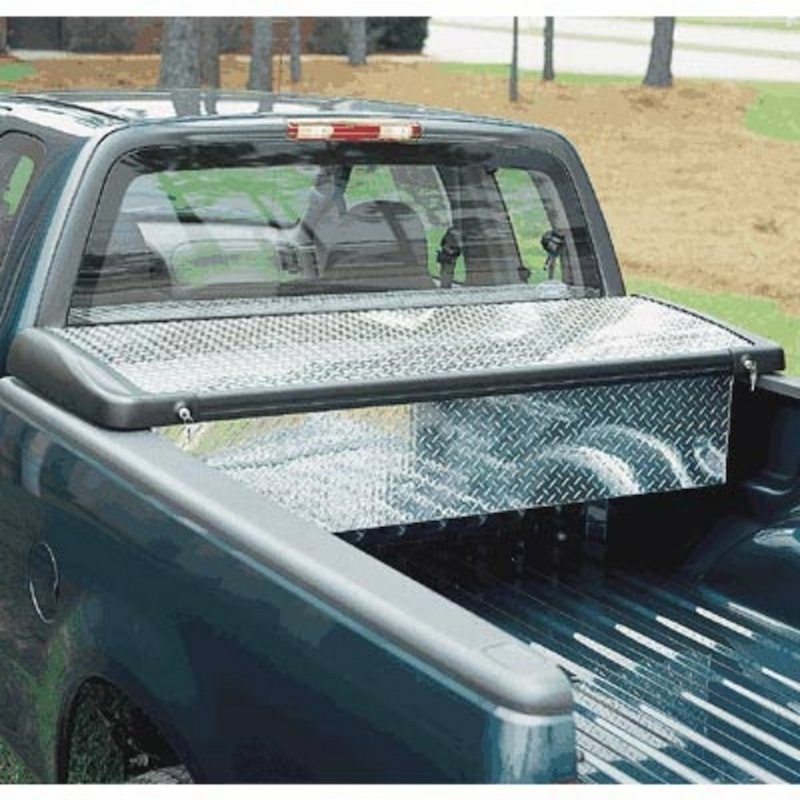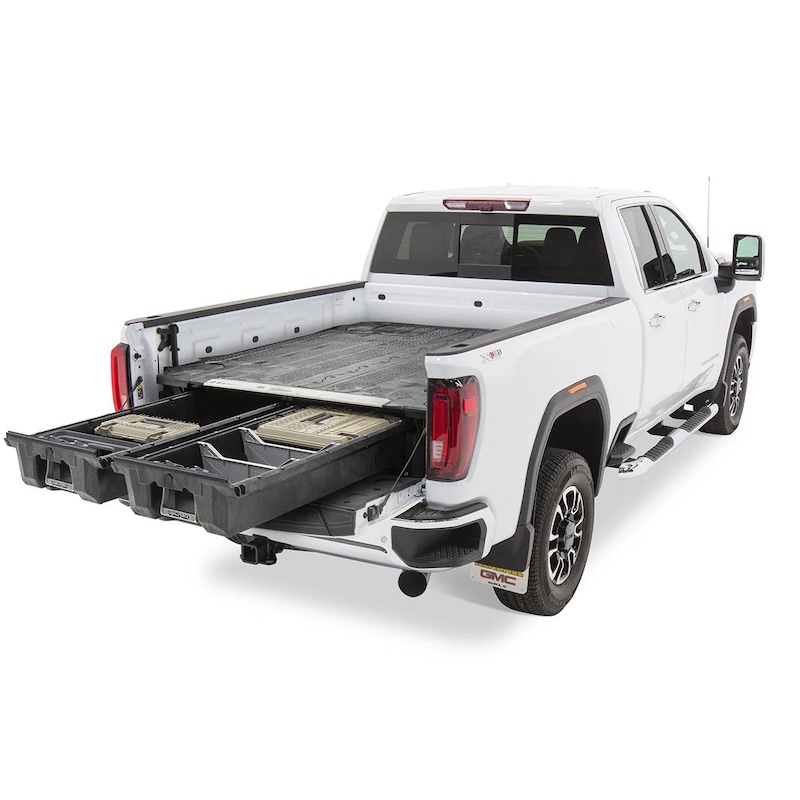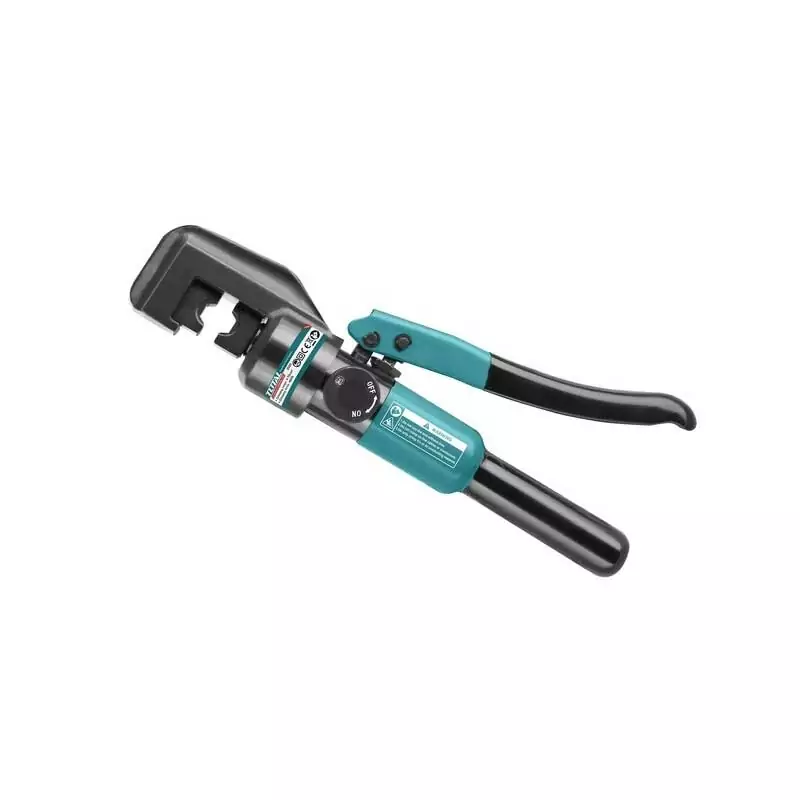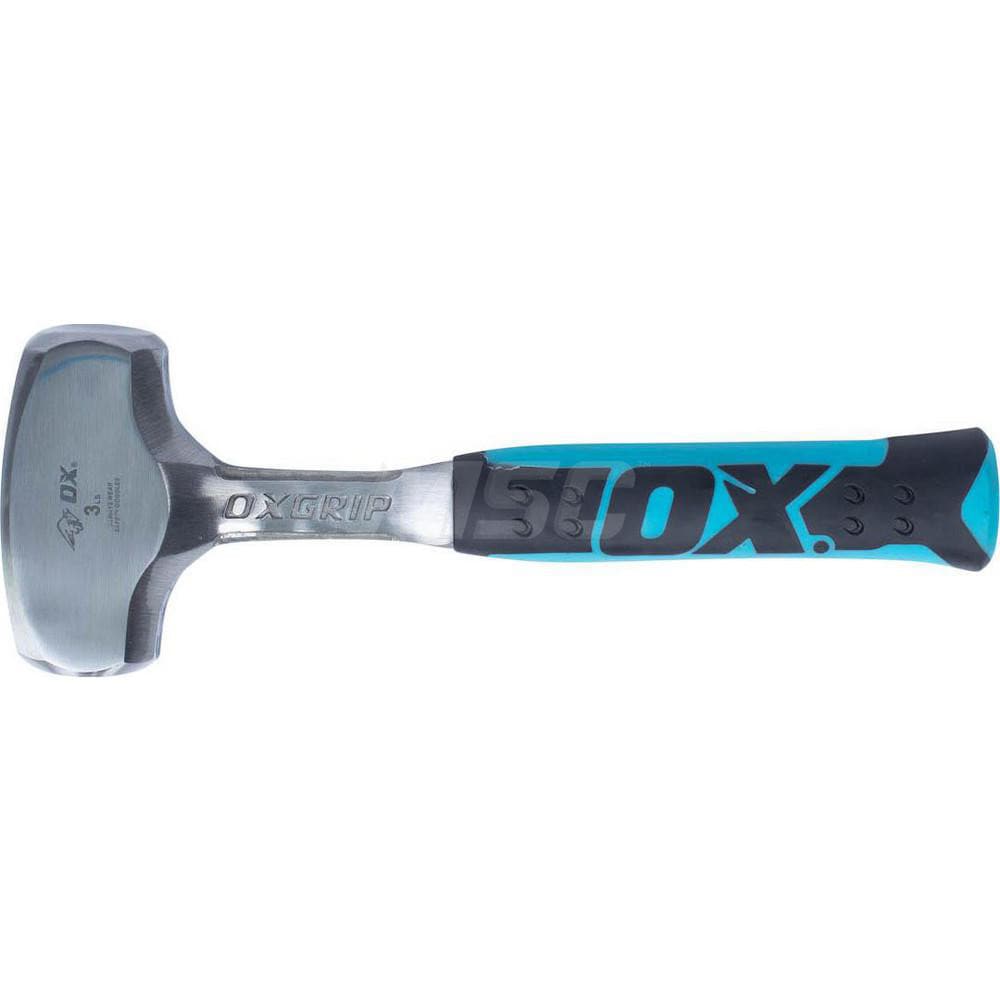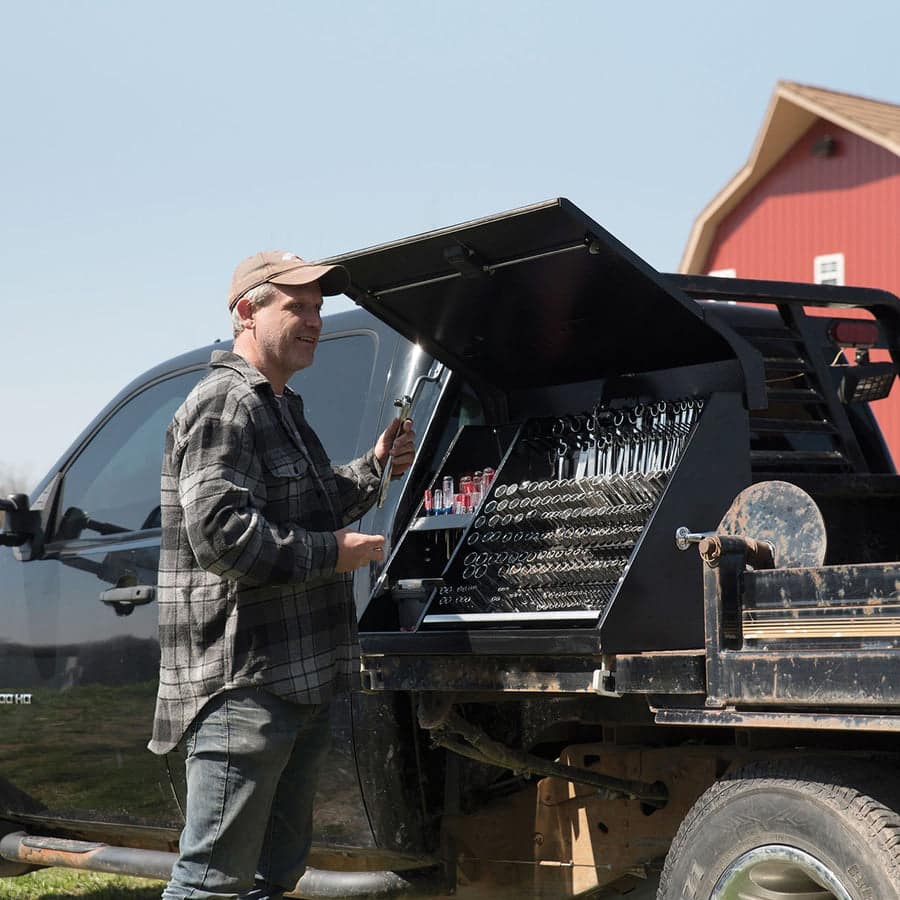
The Triangle Tool Box: Fusion of Functionality and Portability
Introduction:
The triangle tool box represents a harmonious marriage of functionality and portability, offering craftsmen, technicians, and enthusiasts a practical storage solution that maximizes organizational efficiency while optimizing space-saving conveniences. This comprehensive guide delves into the myriad advantages of triangle tool boxes, unveiling their dynamic design, superior build quality, versatile utility, organizational prowess, and substantial contribution to the optimization of storage solutions for a wide array of tools and accessories.
Part 1: Design Innovation and Space Optimization
Triangle tool boxes boast design innovation and space optimization, representing a modern approach to tool storage that leverages triangular configurations to maximize interior space, facilitate portability, and streamline the organization of tools, accessories, and equipment.
Triangular Geometry: The triangular geometry of tool boxes optimizes interior space utilization, allowing for efficient arrangement and compact storage of tools and accessories to ensure that they remain secure and easy to access, limiting clutter and enhancing work efficiency.
Portability and Accessibility: The inherent portability and accessibility of triangle tool boxes allow easy carrying, effortless placement in confined spaces, and accessibility to tools without having to rummage through disorganized compartments common to traditional-shaped tool boxes.
Part 2: Multi-Compartmental Organization and Accessibility
Triangle tool boxes offer multi-compartmental organization and accessibility, incorporating intuitive features such as customizable dividers, removable trays, and prescribed tool slots, which enable users to compartmentalize and access their tools with ease and precision.
Customizable Dividers: The inclusion of customizable dividers in triangle tool boxes allows users to tailor the internal organization to their specific requirements, creating designated compartments for various tools while ensuring easy identification, simple retrieval, and secure storage.
Removable Accessory Trays: Removable trays within triangle tool boxes offer additional organization options for small parts, accessories, fasteners, and consumables, facilitating easy access and ensuring that every item has a designated storage space to minimize clutter and uphold organization.
Part 3: Durability and Superior Build Quality
The triangle tool box is distinguished by durability and superior build quality, incorporating rugged materials, impact-resistant construction, and reinforced components that endow it with the resilience necessary to withstand the demands of everyday use and protect its contents.
Rugged Material Composition: Triangle tool boxes are composed of rugged materials such as high-grade polypropylene, impact-resistant resin, and reinforced plastics, ensuring resilience against wear, tear, and external forces while safeguarding the tools and equipment contained within.
Reinforced Corner Joints: The use of reinforced corner joints in triangle tool boxes contributes to their durability and structural integrity, preventing potential weaknesses at key stress points and ensuring that the box can maintain its form and safeguard its contents during transport and use.
Part 4: Specialized Tool Storage Solutions
Triangle tool boxes provide specialized storage solutions for unique tool types, accommodating the storage of long-handled tools, power tools, and bulky accessories, while ensuring their security and maintaining an organized workshop or job site.
Long-Handled Tool Storage: Triangle tool boxes feature configurations that allow for efficient storage of long-handled tools such as levels, saws, and hammers, providing secure compartments and strategic layouts that prevent damage and facilitate easy retrieval.
Power Tool Compartmentalization: The design of triangle tool boxes incorporates dedicated spaces for power tools, including cordless drills, impact drivers, and other similar equipment, keeping them separate from other tools to prevent potential damage and maintain optimal organization.
Part 5: Enhanced Transport and Compact Storage
Triangle tool boxes enhance transport capabilities and enable compact storage, with features such as foldable handles, stackable designs, and supplementary attachment points for hanging or securing the box in a variety of settings.
Foldable Handle Design: The foldable handle design of triangle tool boxes allows for easy transport and convenient storage in confined spaces, promoting versatility and portability while ensuring that the handle can be neatly stowed away to maximize space efficiency.
Stackable Configurations: Triangle tool boxes often incorporate stackable configurations, allowing multiple units to be securely stacked on top of each other, optimizing storage space and facilitating efficient organization of tools and equipment in workshops, job sites, and storage areas.
Part 6: Versatile Applications in Various Settings
Triangle tool boxes boast versatile applications in a variety of settings, accommodating the diverse needs of professionals, homeowners, and hobbyists across multiple domains. From construction sites and workshops to home improvement projects and outdoor activities, the triangle tool box serves as a versatile solution that enhances organization and accessibility in a broad range of environments.
Construction Sites: Triangle tool boxes are ideal for construction sites, providing a portable and organized storage solution for a multitude of hand tools, fasteners, and accessories. Their durability, space-saving design, and convenient transport features make them an essential asset for tradespeople working on various construction projects.
Workshops and Garages: In workshops and garages, triangle tool boxes offer a compact and efficient way to organize and store a diverse array of tools, ensuring easy access and maintaining order in home or professional workspaces. The multi-compartmental organization and enhanced transport capabilities make them invaluable for maintaining a clutter-free environment.
Outdoor Activities: Triangle tool boxes are also practical for outdoor activities such as camping, gardening, and recreational hobbies. Their compact design and stackable features facilitate easy transportation of essential tools and equipment, ensuring that users have a secure and organized system for storing items during outdoor pursuits.
Part 7: Innovations in Toolkit Organization
Triangle tool boxes represent an innovation in toolkit organization, introducing a new paradigm for efficient and space-optimized storage of tools and accessories. By leveraging triangular configurations and advanced storage solutions, these tool boxes enhance the user experience and streamline the process of accessing, retrieving, and maintaining a myriad of tools and equipment.
Efficient Space Utilization: Triangle tool boxes maximize interior space utilization, offering a compact structure that optimizes storage capacity and allows for efficient arrangement of tools and accessories. The triangular geometry ensures that items can be stowed in a manner that effectively minimizes wasted space and maximizes the box’s storage capabilities.
Streamlined Tool Retrieval: The innovative design of triangle tool boxes streamlines the process of tool retrieval, with partitioned compartments and customizable layouts ensuring that every tool has a dedicated spot. This feature helps users quickly locate and retrieve specific tools, reducing search time and enhancing work efficiency.
Improved Accessibility: Triangle tool boxes improve accessibility by providing clear visibility and easy access to organized tools and equipment. The multi-compartmental organization and adjustable dividers enable users to maintain a logical arrangement of items, facilitating effortless access and promoting a well-organized toolkit.
Part 8: Ergonomic Design and User Comfort
Triangle tool boxes feature an ergonomic design that prioritizes user comfort, ensuring that transportation, handling, and use of the tool box are convenient and hassle-free. With features such as comfortable grips, lightweight construction, and user-friendly functionality, these tool boxes can enhance the overall user experience.
Comfortable Grips: Triangle tool boxes’ well-designed handles and grips minimize strain on the user’s hands, ensuring a secure and ergonomically sound grip during transportation and use.
Lightweight Construction: The lightweight construction of triangle tool boxes reduces the strain associated with transportation and lifting, enhancing user comfort and making the tool box easier to move around. This feature is particularly advantageous when transporting the box between job sites or storing it in confined spaces.
Conclusion:
The triangle tool box stands as an epitome of modern innovation, harmonizing functionality, portability, and superior organization within a compact and versatile storage solution. With its dynamic design, multi-compartmental organization, and resilient build quality, the triangle tool box offers craftsmen, technicians, and enthusiasts an indispensable tool storage solution that caters to diverse tool types, maximizes space efficiency, and enhances portability and organization. As an integral asset in the realm of tool organization and workshop management, the triangle tool box embodies a seamless fusion of practicality and innovation, ensuring that users can optimize their toolkit’s organization and transport capabilities to achieve superior results across a breadth of applications.
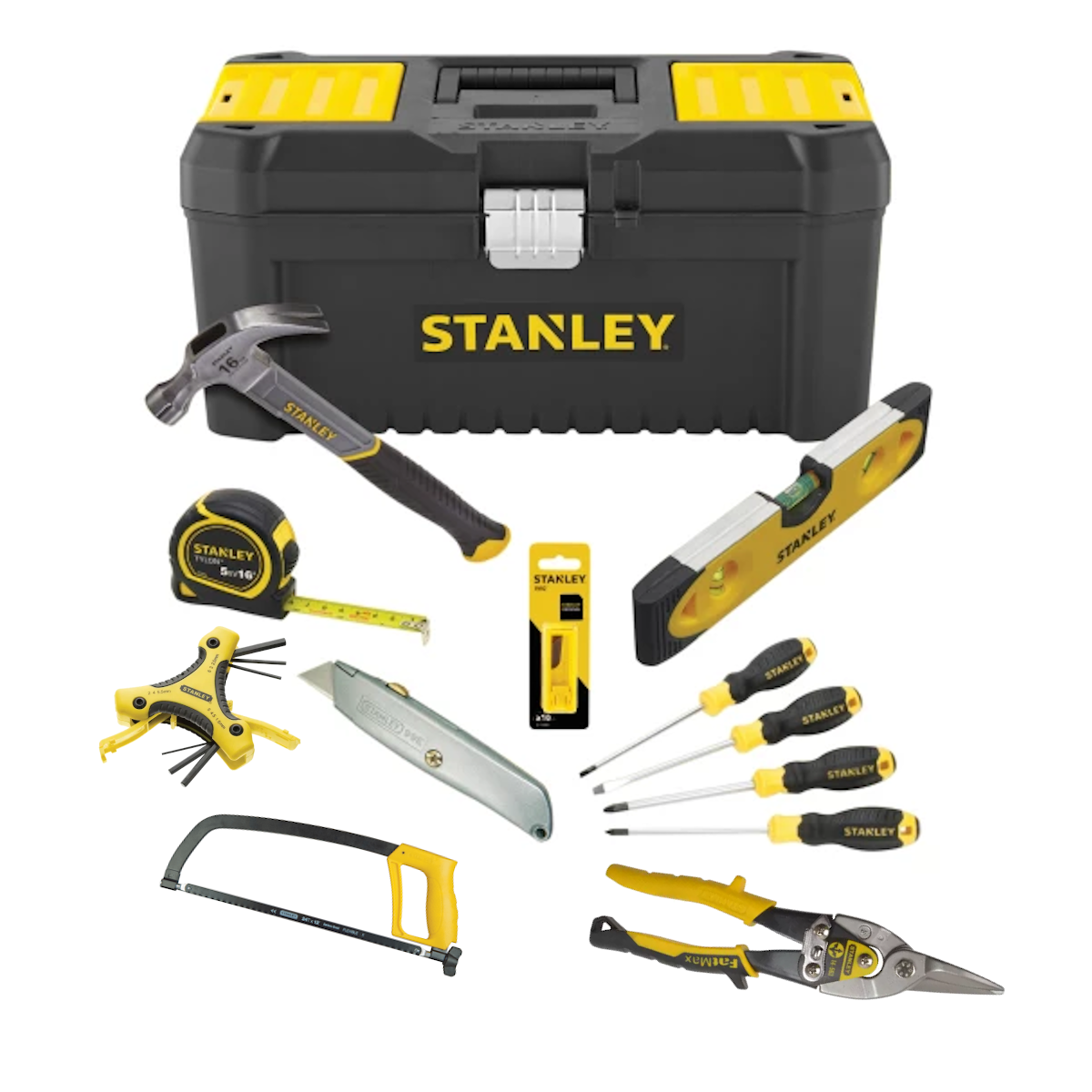
Unleashing Precision and Versatility: The Stanley Tool Set
Introduction:
Stanley tool set stands as a paragon of precision, durability, and versatility, epitomizing a legacy of exceptional craftsmanship and innovative engineering that has solidified their reputation as essential companions for both professional tradespeople and DIY enthusiasts. This comprehensive guide delves into the enduring supremacy of Stanley tool sets, uncovering their rich heritage, industry-leading innovations, diverse range of applications, exceptional build quality, and the profound impact they exert as indispensable assets in the pursuit of superior craftsmanship.
Part 1: Heritage of Excellence and Craftsmanship
Stanley tool set is steeped in a heritage of excellence and craftsmanship, tracing their origins to over a century of innovative design, precision manufacturing, and a steadfast commitment to creating tools that exemplify unrivaled utility and enduring quality.
Pioneering Legacy: The legacy of Stanley tool sets is synonymous with pioneering innovation, with the brand’s deep-rooted history dating back to the advent of the modern industrial age, where they laid the foundation for a tradition of exceptional tooling solutions that cater to a wide spectrum of professional and personal needs.
Innovative Craftsmanship: The company’s enduring commitment to innovative craftsmanship is evident in its emphasis on superior materials, ergonomic design, and advanced engineering techniques, cultivating a tradition of excellence that has solidified its position as a leader in the realm of precision hand tools and equipment.
Part 2: Industry-Leading Innovations and Design
Stanley tool sets encompass industry-leading innovations and design, incorporating cutting-edge features, ergonomic advancements, and dynamic functionalities that elevate the user experience and enable superior performance across a diverse array of applications.
Ergonomic Excellence: Stanley tool sets prioritize ergonomic design, integrating features such as comfortable grips, balanced weight distribution, and intuitive controls to enhance user comfort and reduce fatigue, bolstering efficiency and optimizing the handling of tools during prolonged use.
Dynamic Functionality: The dynamic functionality of Stanley tool sets is underscored by innovative features such as quick-release mechanisms, adjustable components, and versatile accessories, all of which enhance adaptability and facilitate seamless transitions between various tasks and projects.
Part 3: Versatility Across Trade Specialties
Stanley tool sets exhibit exceptional versatility across a wide spectrum of trade specialties, supporting professionals and enthusiasts engaged in carpentry, automotive repair, plumbing, electrical work, and general maintenance with a comprehensive array of high-quality hand tools.
Multifaceted Utility: The versatility of Stanley tool kits meet the different needs of craftsmen, technicians and hobbyists, providing a wealth of tool solutions, including wrenches, ratchets, screwdrivers, pliers and a variety of specialized tools optimized for specific industries.
Adaptability and Interchangeability: Stanley tool sets embrace adaptability and interchangeability, allowing users to effortlessly supplement and customize their tool sets to suit evolving project requirements, facilitating seamless integration of complementary tools and accessories to achieve optimal performance and versatility.
Part 4: Exceptional Build Quality and Enduring Durability
Stanley tool sets’ superior build quality and long-lasting durability, featuring premium materials, precision-engineered components and rugged construction.
Rugged Construction: The rugged construction of Stanley tool sets exudes an unwavering commitment to durability, employing robust materials such as chrome vanadium steel, corrosion-resistant finishes, and impact-resistant housings that ensure the tools can withstand the harshest conditions and intense work environments.
Reliability and Longevity: The build quality of Stanley tool sets culminates in unparalleled reliability, longevity, and consistent performance, instilling confidence in users who depend on the tools to deliver consistent precision, strength, and resilience across an array of demanding tasks and applications.
Part 5: Precision Calibration and Optimal Performance
Stanley tool sets are distinguished by precision calibration and optimal performance, with tools calibrated to exacting standards and engineered to deliver exceptional accuracy, consistency, and efficiency, facilitating superior results and seamless workflow integration.
Accuracy and Consistency: Precision calibration ensures that Stanley tool sets deliver accuracy and consistency, enabling users to execute intricate measurements, achieve tight tolerances, and perform intricate tasks with the assurance of reliable performance and uncompromising precision.
Effortless Task Execution: The optimal performance of Stanley tool sets streamlines task execution, enabling users to tackle projects with efficiency, confidence, and elevated productivity, underscoring the brand’s dedication to facilitating seamless workflow integration and superior results across diverse trade disciplines.
Part 6: Versatility of Specialty Tool Sets
Stanley tool sets encompass a diverse range of specialty tool sets specifically tailored for unique trade applications, catering to the specialized needs of professionals and enthusiasts across various disciplines with a comprehensive selection of precision-engineered tools.
Trade-Specific Precision Tools: Stanley’s specialty tool sets include trade-specific precision tools optimized for professions such as carpentry, electrical work, automotive repair, plumbing, and woodworking, empowering craftsmen with the exact instruments required to excel in their chosen trade specialties.
Comprehensive Solutions: The diverse spectrum of Stanley’s specialty tool sets provides comprehensive solutions that encompass an assortment of hand tools, power tools, measuring instruments, and accessory kits, offering the precision, versatility, and durability necessary to address the specific demands of diverse professional trade applications.
Part 7: Customer-Centric Warranty and Support
Stanley tool set provides users with peace of mind and reassurance that their tooling investments are safeguarded by comprehensive support, repair services, and attentive after-sales care.
Reliable Warranty Coverage: Stanley tool sets come with solid warranty coverage, demonstrating the brand’s confidence in the durability, performance, and quality of its products, ensuring that users will receive timely assistance and solutions to any issues encountered during the tool’s lifespan.
Proactive Customer Support: Stanley Support provides users with a seamless experience and ensures their tool investment remains optimized and protected through its responsive service channels, knowledgeable service representatives, and fast consulting solutions.
Part 8: Enduring Cultural Impact and Industry Leadership
Stanley tool sets have made an enduring cultural impact and continue to lead the industry as the preferred choice for professionals and enthusiasts, transcending generational boundaries and affirming their position as essential tools for those who demand precision, durability, and versatility in their craft.
Generational Legacy: The enduring cultural impact of Stanley tool sets extends across generations, exerting a lasting influence on the realms of craftsmanship, DIY pursuits, and professional trades, fostering a tradition of excellence and reliability that endures as an indispensable asset for enthusiasts and professionals alike.
Industry-Defining Innovation: Stanley tool sets continue to lead the industry by defining new standards for tool quality, craftsmanship, and innovation, leveraging a legacy of excellence to shape the future of precision hand tools and maintain their position as the preferred choice for discerning professionals and enthusiasts.
Conclusion:
Stanley tool set stands as unrivaled exemplars of precision, versatility, and enduring quality, embodying a legacy of innovative design, industry leadership, and a steadfast dedication to providing craftsmen, technicians, and DIY enthusiasts with the tools necessary to achieve superior results. With their heritage of excellence, industry-defining technology, and the profound impact they exert on the realms of trade proficiency, craftsmanship, and personal projects, Stanley tool sets continue to represent an indispensable asset for individuals who demand precision, durability, and the uncompromising performance necessary to achieve precise and reliable results across a breadth of applications.
Stanley tool set continues to evolve as a reflection of emerging trends and future innovations, with a commitment to sustainability, smart technology integration, and the continual pursuit of excellence, ensuring that the brand remains at the forefront of innovative design, progressive materials, and cutting-edge functionality, providing craftsmen and enthusiasts with the tools necessary to meet the ever-evolving demands of modern craftsmanship and trade applications. With an unwavering dedication to pioneering advancements, Stanley tool sets will continue to embody the spirit of precision and versatility, empowering users with the superior capabilities required for success in their professional and personal pursuits.
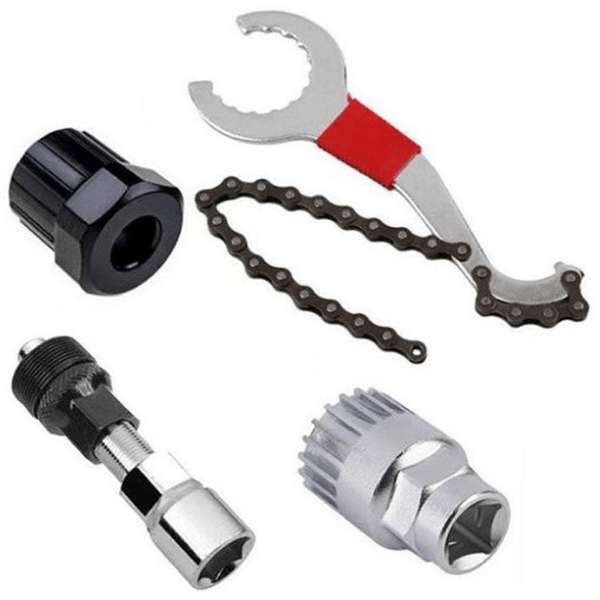
The Comprehensive Guide to Bottom Bracket Tool
Introduction
When it comes to maintaining and servicing a bicycle, having the right tools is crucial. Among the essential tools for bike maintenance is the bottom bracket tool, which is used to install, remove, and service the bottom bracket – a critical component that allows the crankset to rotate smoothly. In this comprehensive guide, we will explore the importance of bottom bracket tool, the different types of bottom brackets they work with, the steps for using them, and the benefits of investing in quality tools for maintaining this vital bicycle component.
Part 1: Understanding the Importance of Bottom Bracket Tools
Level 1: Essential for bottom bracket maintenance
Bottom bracket tools are essential for the maintenance of a bicycle’s bottom bracket. The bottom bracket is a central component of the bike’s drivetrain, and regular maintenance is necessary to ensure smooth pedaling and prevent premature wear. The precise and specialized design of bottom bracket tools allows cyclists and bike mechanics to efficiently service and replace bottom brackets as needed, maintaining the overall performance of the bicycle.
Level 2: Cost-effective solution for DIY maintenance
By investing in a quality bottom bracket tool, cyclists can perform routine maintenance and repairs on their bottom brackets without needing to rely on a bike shop or professional mechanic. This allows for cost savings over time and empowers bike owners to take ownership of their bike’s upkeep and performance.
Part 2: Types of Bottom Brackets and Compatible Tools
Level 1: Threaded vs. Press-Fit bottom brackets
There are two primary types of bottom brackets found in bicycles: threaded bottom brackets and press-fit bottom brackets. Each type requires a specific bottom bracket tool for installation and removal.
Level 2: Different tools for threaded and press-fit bottom brackets
Threaded bottom brackets typically require a bottom bracket tool with a handle or socket designed to fit the external notches or cups of the bottom bracket. Press-fit bottom brackets, on the other hand, may need a dedicated press-fit bottom bracket tool that interfaces with the inner diameter of the bottom bracket and allows for precise installation and extraction.
Part 3: Steps for Using a Bottom Bracket Tool
Level 1: Removal of the old bottom bracket
Using the appropriate bottom bracket tool, cyclists or mechanics can start by removing the old bottom bracket. This involves securing the bicycle in a bike stand and carefully inserting the tool into the splines or cups of the bottom bracket before applying torque to loosen and extract the unit from the frame.
Level 2: Installation of the new bottom bracket
Once the old bottom bracket is removed, the new unit can be installed using the bottom bracket tool in the reverse manner. The tool ensures the proper alignment and torque required for secure installation, ensuring smooth pedaling and optimal performance.
Part 4: Advantages of Quality Bottom Bracket Tools
Level 1: Durability and precision
Quality bottom bracket tools are designed using durable materials such as hardened steel, providing reliable performance over numerous installations and removals. Additionally, the precision in design allows for a snug fit and effective application of torque, reducing the risk of damage to the bottom bracket or the bike frame.
Level 2: Versatility and compatibility
Investing in quality bottom bracket tools often means acquiring a versatile tool that can be compatible with a range of bottom bracket standards and designs. This ensures that cyclists and mechanics are well-equipped to handle various bottom bracket types, making the tool a long-term and versatile addition to the toolkit.
Part 5: Common Maintenance and Repairs Addressed by Bottom Bracket Tools
Level 1: Addressing creaks and noises
One common issue that can be addressed using a bottom bracket tool is creaking or unusual noises originating from the bottom bracket area. By servicing and re-installing the bottom bracket with the appropriate tool, cyclists can often eliminate these distractions and return the bike to its optimal performance.
Level 2: Preventing premature wear
Regular servicing of the bottom bracket using proper tools can help prevent premature wear and damage to the bottom bracket and surrounding components. The correct installation torque and proper maintenance practices can extend the lifespan of the bottom bracket, reducing the frequency of replacements and minimizing the risk of excessive wear.
Part 6: Considerations for Choosing a Bottom Bracket Tool
Level 1: Compatibility with bike’s bottom bracket
When selecting a bottom bracket tool, it’s crucial to ensure that the tool is compatible with the specific bottom bracket standard on the bicycle. This entails matching the tool’s design, such as the interface and splines, to the bottom bracket type, whether threaded or press-fit, and the specific dimensions and configurations.
Level 2: Ergonomic design and ease of use
An often overlooked consideration is the ergonomic design of the bottom bracket tool. Tools with comfortable handles and user-friendly features can make the process of bottom bracket maintenance more efficient and less fatiguing, particularly during more extensive maintenance or for those working on multiple bikes.
Part 7: Importance of Proper Maintenance of Bottom Bracket Tools
Level 1: Cleaning and lubrication
Just as the bottom bracket itself requires maintenance, so do the tools used for servicing it. Regular cleaning and appropriate lubrication of the tool’s moving parts or contact surfaces, such as the splines or sockets, are necessary to ensure smooth operation and prevent premature wear or damage to the tool and the bottom bracket.
Level 2: Storage and protection
Proper storage of bottom bracket tools is essential to prevent exposure to moisture, corrosion, or physical damage. Storing the tools in a dry and secure environment, and keeping them adequately protected when not in use, will extend their lifespan and maintain their functionality. Additionally, using protective sleeves or cases can prevent accidental damage and maintain the precision of the tool’s components.
Part 8: Investing in Quality Bottom Bracket Tools
Level 1: Long-term reliability and cost-effectiveness
Quality bottom bracket tools represent a long-term investment. Their durable construction, precision design, and compatibility with a diverse range of bottom brackets make them a reliable and cost-effective solution for addressing bottom bracket maintenance needs over time. While initial investment may be higher, the long-term versatility and reliability of quality tools can outweigh the costs associated with frequent replacements or subpar performance.
Level 2: Professional results and peace of mind
Whether used by professional mechanics or cycling enthusiasts, quality bottom bracket tools deliver professional-grade results and instill confidence in the maintenance and repair work performed. The precision, cleanliness, and proper torque application achieved using quality tools contribute to the overall performance and longevity of the bottom bracket and the bicycle, providing peace of mind to the user.
Part 9: The Future of Bottom Bracket Tools
Level 1: Technological advancements
As technology continues to evolve in the cycling industry, so do the tools used for bike maintenance. Manufacturers are constantly innovating to develop more advanced bottom bracket tools that offer greater precision, efficiency, and compatibility with new bottom bracket standards and designs. These advancements may include the integration of digital torque measurement, improved materials and ergonomics, and enhanced durability.
Level 2: Sustainability and environmental considerations
The future of bottom bracket tools may also involve a stronger emphasis on sustainability and environmental responsibility. This could include the use of eco-friendly materials, energy-efficient manufacturing processes, and the development of tools designed for longevity, repairability, and recyclability, aligning with the growing demand for more sustainable products in the cycling industry.
Conclusion
In conclusion, bottom bracket tools are indispensable for anyone involved in bicycle maintenance and repairs. Whether it’s the removal and installation of a new bottom bracket or addressing common issues such as creaking or premature wear, having the right bottom bracket tool is essential for maintaining the smooth operation and longevity of a bicycle. Investing in a quality bottom bracket tool means ensuring durability, precision, and versatility, which are essential for achieving professional results. By understanding the importance of these tools, the types of bottom brackets they work with, their usage steps, and the benefits they offer, cyclists and mechanics can maintain their bikes with confidence and efficiency, ultimately enhancing their cycling experience.
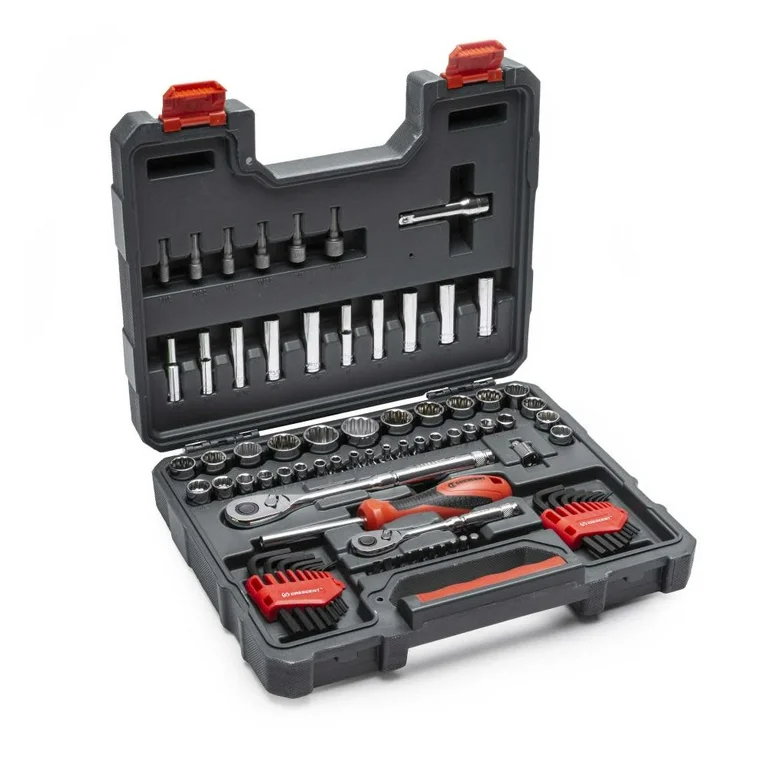
The Ultimate Guide to the Crescent Tool Set
Introduction
When it comes to DIY projects, having the right tools on hand is essential. One brand that has been trusted by professionals and hobbyists alike for decades is Crescent. With a wide range of high-quality hand tools, power tools, and tool sets, Crescent has become a go-to choice for those who demand durability, reliability, and precision. In this comprehensive guide, we will take a closer look at the Crescent tool set, exploring its history, the range of products available, and the benefits of investing in this trusted brand.
Part 1: History of Crescent Tools
Level 1: Origins of the Crescent brand
Crescent, a brand known for its innovative and reliable tools, has a rich history dating back to the late 19th century. The Crescent brand originated in the United States and quickly gained a reputation for producing high-quality hand tools, wrenches, and pliers. The company’s commitment to quality and innovation has made it a staple in the tool industry for over a century.
Level 2: Evolution of product offerings
Over the years, Crescent has expanded its product offerings to include a wide range of tools, from hand tools and wrenches to power tools and tool sets. The brand’s dedication to meeting the needs of professionals and DIY enthusiasts alike has allowed it to remain a leading choice for those seeking reliable and durable tools for a variety of projects.
Part 2: The Range of Crescent Tool Sets
Level 1: Hand tool sets
Crescent offers a diverse range of hand tool sets designed to meet the needs of professionals and DIYers. These sets often include a combination of wrenches, pliers, screwdrivers, and other essential hand tools, providing a convenient and cost-effective solution for those who need a complete set of tools for various projects.
Level 2: Power tool sets
In addition to hand tools, Crescent also offers a selection of power tool sets, including drills, saws, and impact drivers. These sets are designed to provide users with everything they need to tackle a wide range of tasks, from woodworking to metalworking and beyond. With a focus on durability, performance, and user-friendly design, Crescent power tool sets are a popular choice among professionals and hobbyists alike.
Part 3: Benefits of Investing in Crescent Tool Sets
Level 1: Durability and reliability
One of the key benefits of investing in Crescent tool sets is the brand’s commitment to durability and reliability. With a focus on using high-quality materials and precision engineering, Crescent tools are built to last. And providing users with confidence and peace of mind when taking on challenging projects.
Level 2: Precision and performance
Another advantage of Crescent tool sets is their precision and performance. Crescent products are designed to deliver exceptional performance. Allowing users to work with accuracy and efficiency. This focus on precision and performance sets Crescent tools apart from the competition. And making them an ideal choice for those who demand the best from their tools.
Part 4: Popular Crescent Tool Set Options
Level 1: Crescent 170-piece General Purpose Tool Set
The Crescent 170-piece General Purpose Tool Set is a comprehensive set that includes a wide variety of hand tools, including wrenches, pliers, screwdrivers, and more. This set is ideal for those who need a versatile and reliable collection of tools for tackling a range of tasks around the home or job site.
Level 2: Crescent CTK170CMP2 Mechanics Tool Set
For those in need of a high-quality and comprehensive mechanics tool set, the Crescent CTK170CMP2 is an ideal choice. This set includes a wide array of sockets, ratchets, wrenches, and other essential tools, making it the perfect solution for automotive work, equipment maintenance, and other mechanical tasks.
Part 5: Tips for Maximizing the Value of Crescent Tool Sets
Level 1: Proper maintenance and storage
To get the most out of a Crescent tool set, it’s essential to properly maintain and store the tools. This includes regular cleaning, lubrication, and storage in a dry, climate-controlled environment. By taking proper care of Crescent tools, users can ensure they remain in top condition for years to come.
Level 2: Using the right tool for the job
Another way to maximize the value of Crescent tool sets is by using the right tool for the job. Each tool in a Crescent set is designed for a specific purpose, and using the wrong tool can lead to inefficiency, damage to the tool or workpiece, or even injury. By taking the time to select the appropriate tool for each task, users can make the most of their Crescent tool sets while ensuring safety and precision.
Part 6: Innovation and Technology in Crescent Tool Sets
Level 1: Incorporation of advanced materials
Crescent has continually embraced innovation and technology in the development of their tool sets. This includes the incorporation of advanced materials such as high-strength steel, chrome vanadium, and ergonomic handle designs. These materials improve the durability, strength, and user comfort of the tools, enhancing their overall performance and reliability.
Level 2: Integration of power tool technology
In addition to their traditional hand tool offerings, Crescent has also expanded into power tools, integrating cutting-edge technology into their products. This includes features such as brushless motors, lithium-ion batteries, and electronic torque control, which enhance the power, efficiency, and precision of their power tool sets. By staying at the forefront of technological advancements, Crescent ensures that their tool sets remain competitive and effective in meeting the evolving needs of users.
Part 7: Customization and Specialized Tool Sets
Level 1: Customization options for specific trades
Crescent recognizes that different trades and professions may have unique tool requirements. To address this, they offer customization options and specialized tool sets tailored to specific industries such as automotive, construction, plumbing, and electrical work. These specialized sets include a curated selection of tools designed to meet the distinct demands and challenges of each trade, providing professionals with the right tools for their specific applications.
Level 2: Modular tool sets and expandable storage systems
Another way Crescent caters to the customization needs of users is through modular tool sets and expandable storage systems. These sets allow users to build and customize their tool collections based on their preferences and tasks. Additionally, the expandable storage systems provide flexibility for expanding and organizing the tool sets as users’ needs evolve, creating a tailored and efficient toolkit for any user.
Part 8: Eco-Friendly Initiatives and Sustainability
Level 1: Sustainable manufacturing processes
Crescent tools prioritize sustainable sourcing of raw materials, efficient production processes, and waste reduction initiatives. By implementing environmentally friendly practices, Crescent reduces its ecological footprint and contributes to the overall sustainability of its operations.
Level 2: Recyclable packaging and product longevity
To further support sustainability, Crescent utilizes recyclable packaging materials for its tool sets and products. Additionally, by producing durable, long-lasting tools, Crescent promotes extended product lifespans, reducing the frequency of tool replacements and minimizing overall waste. This commitment to sustainability aligns with the growing environmental consciousness of consumers and demonstrates Crescent’s dedication to responsible business practices.
Conclusion
In conclusion, the Crescent tool set is a versatile and reliable option for professionals and DIY enthusiasts alike. With a rich history, a diverse range of products, and a focus on durability, precision, and performance, Crescent tools are a valuable addition to any workshop or toolbox. By investing in a Crescent tool set, users can take on a wide range of projects with confidence. Knowing they have the right tools for the job.
Whether it’s the integration of advanced materials and technology, the customization of specialized tool sets, or the dedication to sustainability, Crescent continues to meet the evolving needs of professionals and DIY enthusiasts. By choosing a Crescent tool set, users not only acquire reliable and high-performance tools but also support a brand. It values innovation, sustainability, and customer satisfaction.

Effortless Elegance: Unveiling the Diversity of Hair Removal Tool
Introduction
Hair removal tools are essential for achieving smooth, hair-free skin and are available in various forms, from traditional razors to modern laser devices. These tools have revolutionized personal grooming routines, offering both convenience and efficiency. In this comprehensive guide, we will explore the diversity, functionalities, and best practices associated with hair removal tools, catering to individuals seeking effective solutions for their aesthetic and grooming needs.
Part 1: Exploring Traditional Hair Removal Tools
Level 1: Unveiling traditional hair removal methods, including razors, epilators, and waxing.
Traditional hair removal tools such as disposable and electric razors, epilators, and waxing kits continue to be widely used for their accessibility and familiarity. Each method offers distinct benefits, from the convenience of razors to the lasting smoothness of waxing, catering to diverse preferences and hair removal needs.
Level 2: Understanding the nuances and effectiveness of traditional hair removal tools in different applications.
Traditional hair removal tools come with their own set of considerations. For example, razors offer quick and easy hair removal, while epilators provide longer-lasting results by removing hair from the root. Waxing offers smooth skin for an extended period but requires more advanced techniques and may involve a degree of discomfort.
Part 2: Innovative Hair Removal Techniques and Devices
Level 1: Exploring advanced hair removal technologies, such as laser and IPL devices.
Modern advancements have introduced innovative hair removal techniques, including laser and Intense Pulsed Light (IPL) devices, which offer long-term hair reduction by targeting the hair follicles. These methods have gained popularity for their precision and efficacy in achieving lasting smoothness.
Level 2: Understanding the science behind laser and IPL hair removal, including their advantages and considerations.
Laser and IPL hair removal devices utilize light energy to target and impair hair follicles, leading to reduced hair growth over time. Understanding the nuances, such as skin type considerations, potential side effects, and the need for multiple sessions, is crucial for individuals considering these advanced hair removal methods.
Part 3: Nurturing Well-being Through Holistic Hair Removal Practices
Level 1: Embracing holistic hair removal solutions, such as sugaring and natural depilatory creams.
Holistic hair removal methods appeal to individuals seeking natural and gentle alternatives. Sugaring, for example, involves a paste made from sugar, lemon, and water, providing an effective and eco-friendly hair removal option. Natural depilatory creams offer a chemical-free way to remove unwanted hair while nourishing the skin.
Level 2: Navigating the benefits and considerations associated with holistic hair removal practices.
Holistic hair removal methods emphasize the use of natural ingredients and gentle techniques, appealing to those with sensitive skin or seeking eco-friendly solutions. Understanding the nuances, such as application methods and skin sensitivities, ensures a positive and nurturing hair removal experience.
Part 4: Essential Considerations for Effective Hair Removal
Level 1: Essential factors for successful and safe hair removal, including skin preparation and aftercare.
Effective hair removal involves preparatory steps such as exfoliation, ensuring a clean and smooth skin surface. Post-treatment care, such as moisturizing and protecting the skin from sun exposure, is crucial for maintaining skin health and preventing irritation or complications.
Level 2: Tailoring hair removal practices to different body areas and skin types.
Different body areas may require tailored approaches. For instance, more delicate areas like the face and bikini line require gentle and precise hair removal techniques, while larger areas like legs may benefit from efficient and time-saving methods. Understanding individual skin types and hair textures aids in choosing the most suitable hair removal tools and techniques.
Part 5: Empowering Choices and Access to Hair Removal Tools
Level 1: Embracing inclusivity and diversity in hair removal solutions, catering to a broad range of needs.
Acknowledging diverse preferences and personal grooming habits, the availability of a variety of hair removal tools accommodates individual choices. Inclusive offerings, such as gender-neutral products and suitable options for different skin tones, ensure that everyone can access effective and tailored hair removal solutions.
Level 2: Reflecting on the evolving landscape of hair removal tools and consumer empowerment.
Consumer demands for versatile and user-friendly hair removal options drive innovation and accessibility. The evolving market offers an array of devices, products, and services that cater to diverse needs, empowering individuals to make informed choices and adapt their grooming routines to align with their lifestyle and aesthetic goals.
Part 6: Addressing Safety and Minimizing Discomfort in Hair Removal
Level 1: Prioritizing safety and minimizing discomfort in hair removal routines.
Ensuring safety during hair removal is paramount. This includes conducting patch tests for new products, maintaining proper hygiene, and following instructions meticulously to minimize the risk of adverse reactions. Additionally, employing techniques like gentle exfoliation and using appropriate post-removal soothing products helps reduce potential discomfort and irritation.
Level 2: Embracing mindful and proactive practices to promote comfort and safety.
Adopting strategies such as closely monitoring skin reactions, employing cooling or numbing agents for sensitive areas, and staying informed about potential irritants and allergens contributes to a more comfortable and secure hair removal experience. By staying attuned to the body’s responses and implementing preventative measures, individuals can prioritize their well-being during hair removal.
Part 7: Advancements in Hair Removal Technology and Techniques
Level 1: Navigating the latest advancements in hair removal technology and techniques.
Continual advancements in hair removal technology have introduced novel tools such as at-home laser devices, precision-focused attachments for versatile use, and hair removal devices that cater to specific skin tones and hair types. Innovations are also evident in techniques that provide long-lasting results with reduced discomfort, reflecting a progressive trend in hair removal practices.
Level 2: Embracing customizable and accessible hair removal solutions.
Tailored technologies and techniques allow for customization based on individual needs and preferences. Users benefit from devices and methods that offer adjustable intensity levels, targeted treatments for particular areas, and options suitable for a wide range of skin types, making advanced hair removal solutions more inclusive, adaptable, and user-friendly.
Part 8: The Role of Education and Empowerment in Hair Removal
Level 1: Advocating education and empowerment in hair removal practices and choices.
Providing comprehensive information on hair removal tools, techniques, and products empowers individuals to make informed decisions. Access to resources, such as guides on proper hair removal methods and understanding product ingredients, enhances knowledge and independence in selecting suitable solutions tailored to personal preferences and needs.
Level 2: Fostering confidence and well-being through informed hair removal choices.
By cultivating a culture of knowledge sharing and inclusivity, individuals are empowered to embrace their unique hair removal preferences and make choices that align with their well-being and confidence. Informed decisions, based on a deep understanding of available options and their implications, contribute to a positive and empowering hair removal experience. Additionally, advocating for diversity in beauty standards and showcasing a range of hair removal solutions suitable for different personal styles and preferences fosters a climate of acceptance, self-expression, and elevated self-assurance.
Conclusion
Hair removal tool plays a pivotal role in grooming and personal care, offering a multitude of options to achieve smooth, hair-free skin. From traditional razors and epilators to advanced laser devices and holistic practices, the diverse array of hair removal solutions enriches the choices available to individuals. Understanding the functionalities, considerations, and advancements in hair removal tools enables individuals to select tailored options that best suit their needs, contributing to their overall well-being and confidence.
In embracing diverse hair removal tools and techniques, individuals are empowered to craft personalized grooming routines that align with their unique needs and desires. Through education, inclusivity, and innovative advancements, the landscape of hair removal is evolving, offering tailored solutions that promote confidence, well-being, and individual expression.
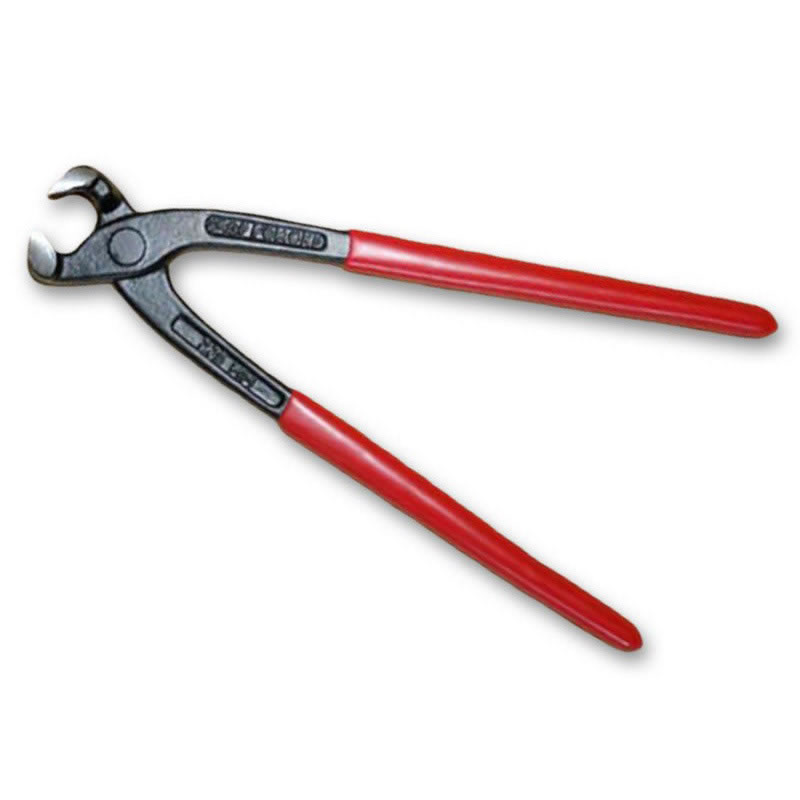
Unleashing Versatility: Clamp Tool in Woodworking and Beyond
Introduction
Clamp tools are indispensable devices in woodworking and various other applications, providing essential support, stability, and precision in a wide range of tasks. From securing workpieces during cutting and assembly to facilitating intricate gluing and clamping operations, these tools are fundamental to achieving professional-quality results. In this comprehensive guide, we will explore the diverse types, applications, and essential features of clamp tool, illuminating their vital role in woodworking and beyond.
Part 1: Understanding the Fundamental Functions of Clamp Tools
Level 1: The pivotal role of clamp tools in woodworking and other applications.
Clamp tools serve as vital components in woodworking and various disciplines, providing essential clamping force to hold workpieces firmly in place during cutting, shaping, gluing, and assembly operations. They offer stability, precision, and control, ensuring accurate and secure work across a multitude of tasks.
Level 2: Exploring the diverse applications of clamp tools in woodworking and related trades.
From edge gluing and panel assembly to securing jigs and fixtures, clamp tools find application in a broad spectrum of woodworking tasks. In addition to woodworking, they are indispensable in metalworking, welding, automotive repairs, and DIY projects, demonstrating their versatility and utility across various industries and hobbies.
Part 2: Types and Varieties of Clamp Tools
Level 1: An overview of the different types and styles of clamp tools available.
Clamp tools come in a variety of styles, including bar clamps, pipe clamps, C-clamps, quick-release clamps, spring clamps, and parallel clamps, each tailored to specific applications and workpiece requirements. Understanding the features and capabilities of each type is essential for selecting the right tool for the task at hand.
Level 2: Delving into the unique features and advantages of specific clamp tool varieties.
Each type of clamp tool offers distinct features and benefits, such as extended reach, deep clamping capacity, rapid adjustment mechanisms, and specialized jaw designs, tailored to accommodate specific workpiece dimensions, materials, and project requirements. Familiarity with the attributes of each type empowers users to make informed choices for their clamping needs.
Part 3: Essential Considerations for Selecting Clamp Tools
Level 1: Key factors to consider when choosing clamp tools for woodworking and other applications.
Critical considerations such as clamping force, throat depth, jaw capacity, and construction materials impact the selection of clamp tools. Understanding the specific demands of a project, such as workpiece size, material composition, and the required level of clamping pressure, ensures the appropriate tool is chosen for optimal results.
Level 2: Assessing the features and qualities that define high-quality clamp tools.
When evaluating clamp tools, factors such as durability, stability, ease of use, and precision are paramount. High-quality clamp tools are characterized by robust construction, reliable clamping mechanisms, ergonomic handles, and a smooth, secure operation that instills confidence and facilitates efficient workflow.
Part 4: Techniques and Best Practices for Using Clamp Tools
Level 1: Key techniques for employing clamp tools effectively in woodworking and related activities.
Mastering fundamental techniques such as evenly distributed clamping pressure, proper alignment, and strategic placement of clamps ensures workpiece stability and minimizes the risk of warping, with precision and care being critical for successful outcomes, particularly in glue-ups and demanding joinery tasks.
Level 2: Best practices for optimizing the functionality and performance of clamp tools.
Adhering to best practices, including selecting the appropriate clamp type, applying consistent pressure, and addressing potential clamping interferences or slippage, enhances the effectiveness of clamp tools. Understanding the limitations and capacities of different clamps enables users to maximize their utility and achieve professional-grade results.
Part 5: Maintaining and Caring for Clamp Tools
Level 1: The importance of regular maintenance and care for prolonging the lifespan of clamp tools.
Proper maintenance, including routine cleaning, lubrication of moving parts, and periodic inspections for wear or damage, preserves the functionality and longevity of clamp tools, ensuring they remain reliable and efficient across various projects and applications.
Level 2: Tips for prolonging the life and performance of clamp tools through appropriate care.
Implementing preventive measures, such as storing clamps in a dry environment, examining components for signs of wear, and addressing issues promptly, safeguards the integrity and performance of clamp tools, reducing the risk of malfunction and maintaining their effectiveness over time.
Part 6: Advanced Applications of Clamp Tools
Level 1: Exploring specialized applications and advanced uses of clamp tools in woodworking and beyond.
Clamp tools find advanced applications in intricate woodworking projects, such as luthiery, cabinetry, and furniture making, where precision, stability, and controlled pressure are critical. In addition, they are invaluable in complex metalworking tasks, including welding, fabrication, and specialized machining operations. Understanding these advanced uses expands the scope of clamp tool applications in diverse industries.
Level 2: Showcasing innovative clamp tool adaptations for unique tasks and specialized projects.
Innovations such as corner clamps, edge clamps, and customized fixtures expand the versatility of clamp tools, enabling users to address unique workpiece shapes, angles, and dimensions. Their adaptability facilitates complex joinery, frame construction, and specialized assemblies, enhancing the capabilities of clamp tools in addressing challenging projects with precision and efficiency.
Part 7: Safety Considerations and Ergonomics in Using Clamp Tools
Level 1: Prioritizing safety measures and ergonomic considerations when employing clamp tools in various applications.
Adhering to safety guidelines, including wearing appropriate personal protective equipment and ensuring a clutter-free work area, is essential when using clamp tools. Additionally, ergonomic considerations such as maintaining proper posture, leveraging aids for heavy clamping tasks, and employing clamps with comfortable handles promote user safety and well-being.
Level 2: Implementing safety protocols and ergonomic practices for optimizing the user experience with clamp tools.
Standardizing safe work practices, such as identifying load capacities, leveraging assistive equipment for heavy clamping operations, and taking regular breaks to prevent strain or fatigue, fosters a secure and ergonomic working environment. Prioritizing safety and ergonomics in clamp tool usage promotes a healthy and efficient workflow while minimizing the risk of injuries or strain.
Part 8: Advancements and Innovations in Clamp Tool Technology
Level 1: Surveying modern advancements and technological innovations in clamp tool design and functionality.
Technological advancements have led to the development of innovative clamp tools featuring intuitive mechanisms, enhanced clamping force, and integrated adjustability. Advanced materials, such as lightweight alloys and durable polymers, contribute to the evolution of clamp tool technology, improving handling, performance, and durability across a broad spectrum of applications.
Level 2: Showcasing cutting-edge clamp tools and emerging trends in the industry.
The incorporation of advanced materials, smart clamping mechanisms, and precision engineering characterizes the latest trends in clamp tool design. Digital calipers, automatic clamping systems, and smart clamping technologies represent future-oriented developments, signaling the continuous evolution and adaptation of clamp tools in response to industry demands and technological progress.
Collaborative advancements in clamp tool technology, including digital integration and IoT capabilities, are revolutionizing industrial applications. Smart clamping solutions offer real-time monitoring and remote control, enhancing efficiency and precision. Furthermore, sustainable materials and eco-friendly practices are shaping the future of clamp tool manufacturing, prioritizing environmental responsibility.
Conclusion
Clamp tool is indispensable asset in woodworking, metalworking, fabrication, and a myriad of do-it-yourself and professional tasks, providing essential support, stability, and precision. Their diverse types, applications, and pivotal role in achieving quality outcomes underscore their value as fundamental tools in various industries and creative endeavors. Understanding their features, functions, and best practices for selection and utilization is essential for harnessing their versatility and unleashing their potential across a spectrum of projects and trades.

Unveiling Versatility: Exploring the Ridgid Multi Tool
Introduction
The Ridgid multi tool is a versatile and innovative power tool that has revolutionized the way professionals and DIY enthusiasts approach a wide range of tasks. With its adaptability and multifunctional capabilities, the tool has become a go-to solution for precision cutting, sanding, scraping, and more. In this comprehensive guide, we will delve into the world of the Ridgid multi tool, examining its features, applications, and the myriad benefits it offers to users across various industries and skill levels.
The Ridgid multi tool represents a versatile and indispensable solution for precision cutting, sanding, scraping, and a myriad of other applications. With its ergonomic design, multifunctional capabilities, and advanced features, the multi tool exemplifies excellence in performance and efficiency. By understanding the diverse applications, features, safety considerations, and accessories associated with the Ridgid multi tool, users can harness its adaptability and versatility to elevate their productivity and achieve exceptional results across various projects and industries. As an innovative and essential tool in the trade, the Ridgid multi tool continues to empower professionals and DIY enthusiasts alike to pursue excellence in craftsmanship and efficiency.
Part 1: Understanding the Ridgid Multi Tool
Level 1: Definition and Functionality
The Ridgid multi tool is a compact and ergonomic power tool designed for precise, detail-oriented tasks such as cutting, sanding, grinding, and scraping. Its modular design typically includes a quick-change accessory system that allows for seamless transitioning between different attachments and applications. The multi tool is characterized by its oscillating motion, which enables it to perform a diverse array of tasks with exceptional precision and control.
Level 2: Applications and Versatility
The versatility of the Ridgid multi tool makes it suitable for a wide range of applications, including woodworking, remodeling, flooring, plumbing, and overall general construction. The ability to use various attachments, such as cutting blades, sanding pads, and scraping accessories, enables users to tackle intricate projects and address different materials, including wood, metal, plastic, and drywall. The multi tool’s adaptability and precision make it an indispensable asset for professionals and hobbyists alike.
Part 2: Features and Technology of the Ridgid Multi Tool
Level 1: Motor Power and Speed Control
The performance of the Ridgid multi tool is driven by a powerful motor that provides robust oscillating action and efficient operation. Additionally, advanced models feature variable speed control, allowing users to adjust the oscillation rate to suit the specific application or material being worked on. This feature enhances precision and versatility, ensuring optimal results across different tasks and projects.
Level 2: Quick-Change Accessory System
A hallmark of the Ridgid multi tool is its quick-change accessory system, which enables users to swiftly swap out attachments without the need for additional tools. This design streamlines workflow, minimizing downtime and enhancing productivity. The seamless transition between cutting, sanding, and scraping accessories empowers users to address diverse project requirements without interruption.
Part 3: Benefits of the Ridgid Multi Tool
Level 1: Precision and Control
The oscillating motion of the Ridgid multi tool provides exceptional precision and control, allowing users to navigate intricate cuts, detailed sanding, and delicate material removal with ease. The ability to maneuver the tool in tight spaces and confined areas makes it well-suited for tasks that demand finesse and accuracy, such as trim work, fitting, and intricate detail finishing.
Level 2: Reduced Vibration and Noise
The ergonomic design of the Ridgid multi tool, coupled with its advanced engineering, minimizes vibration and noise during operation. This not only enhances user comfort and reduces fatigue but also contributes to a quieter and more controlled working environment. The reduced vibration also helps to maintain stability and accuracy while working with delicate materials.
Part 4: Selecting the Right Ridgid Multi Tool for Your Needs
Level 1: Consideration of Power Source
Ridgid multi tools are available in corded and cordless models, and the choice between the two depends on individual preferences and project requirements. Corded models offer consistent power output for prolonged usage, while cordless models provide portability and freedom of movement, making them ideal for on-the-go applications and remote job sites.
Level 2: Attachment Compatibility and Versatility
When selecting Ridgid multi tools, it’s essential to consider the availability of compatible attachments and accessories to meet specific project needs. The range of accessories, including cutting blades, sanding pads, and scraping attachments, enables users to effectively address diverse materials and tasks. Compatibility with universal and industry-standard accessories also ensures flexibility and accessibility.
Part 5: Maintenance and Care for the Ridgid Multi Tool
Level 1: Regular Inspection and Cleaning
To maintain the optimal performance and longevity of the tool, routine inspection and cleaning are essential. Periodically checking for debris, dust, or worn components ensures that the tool operates efficiently and safely. Cleaning the tool’s housing, airflow vents, and attachment connection points helps prevent obstructions and ensures seamless functionality.
Level 2: Lubrication and Blade Maintenance
Applying a suitable lubricant to the oscillating mechanism and components can help reduce friction and wear, prolonging the lifespan of the tool and ensuring smooth operation. Additionally, regularly inspecting and replacing worn or damaged cutting blades, sanding pads, and scraping accessories is crucial for maintaining the tool’s effectiveness and safety.
Part 6: Safety Considerations for Operating the Ridgid Multi Tool
Level 1: Personal Protective Equipment
When utilizing the Ridgid multi tool, it is crucial to wear appropriate personal protective equipment (PPE) such as safety glasses, ear protection, and dust masks to safeguard against potential hazards. These precautions help shield the eyes, ears, and respiratory system from airborne particulates, debris, and noise generated during operation, ensuring a safe and healthy work environment.
Level 2: Secure Workpiece and Stability
To prevent accidental slips, kickbacks, or loss of control while using the multi tool, it’s vital to secure the workpiece firmly in place using clamps or vices. Ensuring the stability of the material being worked on helps maintain precision and control during cutting, sanding, or scraping operations. Additionally, maintaining a secure footing and balance while operating the tool contributes to overall safety and effectiveness.
Part 7: Accessories and Add-Ons for the Ridgid Multi Tool
Level 1: Specialized Attachments for Unique Applications
In addition to standard cutting and sanding accessories, the Ridgid multi tool offers a variety of specialized attachments tailored for unique applications. These may include grout removal blades for tile work, flush-cutting blades for precision trimming, and carbide rasp attachments for aggressive material removal. The availability of specialized accessories extends the versatility and functionality of the multi tool, enabling users to address a wider array of tasks.
Level 2: Workstation and Dust Collection Attachments
Workstation accessories such as precision guides and depth stops can enhance the accuracy and repeatability of cutting and sanding operations, especially for detailed or repetitive tasks. Furthermore, incorporating dust collection attachments or vacuum adapters helps maintain a clean work environment by capturing debris and airborne particles, leading to better visibility and reduced cleanup efforts.
Part 8: Innovative Features in Ridgid Multi Tool Models
Level 1: Brushless Motor Technology
Some advanced Ridgid multi tools models feature brushless motor technology, delivering increased efficiency, extended runtime, and reduced maintenance requirements. Brushless motors offer enhanced power and performance, which contributes to prolonged tool longevity and optimal operation across a variety of applications.
Level 2: Intelligent Speed Control and Feedback Systems
Certain Ridgid multi tool variants integrate intelligent speed control and feedback systems that automatically adjust the oscillation speed based on the load and material density. This technology optimizes cutting and sanding performance while minimizing user effort, ensuring consistent results and preventing damage to workpieces.
Conclusion
The Ridgid multi tool has emerged as a versatile and indispensable tool for professionals and DIY enthusiasts, offering precision, adaptability, and efficiency across a wide range of applications. With its multifunctional capabilities, advanced features, and ergonomic design, the tool has redefined the approach to detail-oriented tasks, empowering users to achieve exceptional results with control and accuracy. By understanding the features, applications, and maintenance considerations associated with the multi tool, users can harness its diverse capabilities and elevate their productivity and craftsmanship across various projects and industries. As a valuable asset in the tool arsenal, the Ridgid multi tool continues to inspire innovation and creativity while setting new standards for precision and efficiency.

Uncovering the Benefits: The Hidden Truck Bed Tool Box
Introduction
For truck owners, maximizing storage capacity and organization is a top priority. A hidden truck bed tool box offers a practical and innovative solution for storing tools, equipment, and personal items while keeping them secure and out of sight. In this comprehensive guide, we will delve into the world of hidden truck bed tool boxes, exploring their versatility, benefits, and the factors to consider when selecting the perfect storage solution for your truck.
The hidden truck bed tool box stands as a versatile and invaluable storage solution for truck owners, offering enhanced security, space optimization, and customizable features. By considering the factors essential to choosing a hidden tool box and implementing proper maintenance, truck owners can ensure a reliable and durable storage solution. Beyond conventional tool storage, the hidden tool box’s versatility and adaptability make it a multifunctional accessory that caters to a wide array of storage needs. With its robust security measures, integrated technology, and seamless integration with different truck models, the hidden truck bed tool box remains an indispensable complement to any truck, elevating its organization and functionality with a discreet and secure storage solution.
Part 1: Understanding Hidden Truck Bed Tool Boxes
Level 1: Definition and Functionality
A hidden truck bed tool box, also known as an underbody tool box or side mount tool box, is designed to be discreetly installed beneath the truck bed or along the side rails. These tool boxes are engineered to provide secure storage while remaining out of the way, preserving the truck’s bed space for other cargo and ensuring a sleek and unobtrusive appearance. The practicality of a hidden tool box lies in its ability to keep valuable tools and equipment safe from theft and protected from the elements.
Level 2: Types of Hidden Tool Boxes
Hidden truck bed tool boxes are available in various types, including crossbed tool boxes that span the width of the truck bed, as well as side mount tool boxes that affix to the sides of the bed. Additionally, some tool boxes feature unique designs, such as low-profile options that provide a flush mount appearance or single-lid configurations for easy accessibility. Each type caters to different storage needs and preferences, offering truck owners a diverse range of options to choose from.
Part 2: Benefits of Hidden Truck Bed Tool Boxes
Level 1: Enhanced Security
One of the primary advantages of a hidden truck bed tool box is the added security it provides for valuable tools and equipment. By keeping your items concealed from plain view, the tool box reduces the risk of theft or unauthorized access, safeguarding your valuable assets while parked or on the move. Additionally, many hidden truck bed tool boxes are equipped with secure locking mechanisms, further fortifying the protection of your tools.
Level 2: Space Optimization
Hidden tool boxes are designed to efficiently utilize the often underutilized space beneath the truck bed or along the side rails. By capitalizing on these areas, truck owners can free up valuable bed space and ensure there is ample room for transporting larger cargo, equipment, or materials. This strategic implementation of storage not only enhances organization but also maximizes the truck’s overall functionality.
Part 3: Factors to Consider When Choosing a Hidden Truck Bed Tool Box
Level 1: Compatibility and Fitment
When selecting a hidden truck bed tool box, it’s essential to consider the compatibility and fitment with your specific truck model. Each tool box is engineered to align with particular bed sizes and configurations, so it’s crucial to choose a model that seamlessly integrates with your truck’s dimensions. This ensures a precise fit, optimal functionality, and a streamlined aesthetic.
Level 2: Material Quality and Durability
The durability and resilience of the tool box material are critical factors in determining its longevity and performance. Hidden truck bed tool boxes are commonly constructed from heavy-duty aluminum, steel, or polymer materials, each offering varying degrees of strength and weather resistance. Evaluating the material quality enables truck owners to invest in a tool box that can withstand the rigors of everyday use and endure the challenges of diverse environments.
Part 4: Installation and Accessibility of Hidden Truck Bed Tool Boxes
Level 1: Installation Considerations
Installing a hidden truck bed tool box typically involves securing the unit to the underside of the truck bed or attaching it to the side rails. Some tool boxes may require minor drilling for mounting hardware, while others offer no-drill installation options for added convenience. It’s important to review the installation instructions and ensure that the chosen tool box can be easily integrated with your truck without compromising its structural integrity.
Level 2: Accessibility and Ergonomics
Accessibility is a key aspect to consider when selecting a hidden truck bed tool box. Some tool boxes feature ergonomic designs, such as shock-assisted lids or easy-grip handles, to facilitate effortless opening and closing. Additionally, certain models may include internal dividers, trays, or sliding drawers to enhance organizational efficiency and make retrieving items more convenient. Assessing the accessibility features ensures a seamless user experience and optimizes the functionality of the tool box.
Part 5: Customization and Additional Features of Hidden Truck Bed Tool Boxes
Level 1: Customization Options
Many hidden truck bed tool boxes offer customization options to tailor the storage solution to individual preferences and specific use cases. Customization may include the ability to add accessories such as interior lighting, tool organizers, or tie-down anchors to secure items. Furthermore, some manufacturers may offer custom finishes or color options to complement the truck’s exterior aesthetics, providing a personalized touch to the storage solution.
Level 2: Integrated Technology and Connectivity
Innovative advancements in hidden truck bed tool boxes have led to the incorporation of integrated technology and connectivity features. Some tool box models may offer optional Bluetooth-enabled locking systems or remote-controlled access, enabling truck owners to conveniently and securely manage the contents of the tool box. This integration of technology enhances the overall functionality and adds a layer of modern sophistication to the storage solution.
Part 6: Maintenance and Care for Hidden Truck Bed Tool Boxes
Level 1: Routine Maintenance Practices
Proper maintenance is essential for preserving the functionality and appearance of a hidden truck bed tool box. Regularly inspecting the unit for signs of wear, rust, or corrosion can help identify any issues early on. Additionally, keeping the tool box clean and free from debris, particularly in the hinges and locking mechanisms, ensures smooth operation and extends its lifespan.
Level 2: Protective Measures for Longevity
To protect the tool box from the elements, consider applying a reputable automotive-grade wax or polish to the exterior surfaces. This can help shield the tool box from environmental damage and maintain its aesthetic appeal. Moreover, lubricating the hinges and lock mechanisms with a light, non-greasy silicone spray can prevent rust buildup and ensure effortless operation.
Part 7: Considerations for Security and Theft Prevention
Level 1: Locking Mechanisms and Deterrents
When selecting a hidden truck bed tool box, emphasize the security features to deter theft and safeguard valuable items. Look for models equipped with robust locking mechanisms, such as keyed locks or tamper-resistant designs. Additionally, some tool boxes may offer options for integrating advanced security solutions, such as electronic keypads or remote-controlled locking systems, for enhanced protection.
Level 2: Anti-Theft Installations
For an added layer of security, consider installing security cables or adjustable mounting brackets to further fortify the tool box against unauthorized access. These anti-theft installations can act as effective deterrents and provide peace of mind when leaving valuable tools and equipment unattended.
Conclusion
The hidden truck bed tool box serves as a versatile and indispensable accessory for truck owners, offering a secure and discreet storage solution for tools, equipment, and personal belongings. From its enhanced security and space optimization benefits to its customizable features and integrated technology, the hidden tool box remains a practical addition to any truck. By considering the key factors in choosing a hidden truck bed tool box and evaluating its installation, accessibility, and additional features, truck owners can make an informed investment in a storage solution that perfectly suits their needs. With its seamless integration and reliable performance, the hidden truck bed tool box is an essential companion for optimizing the functionality and organization of any truck.

Mastering Precision: The Potential of the Hydraulic Crimping Tool
Introduction
Hydraulic crimping tool stands at the forefront of essential equipment for professionals across various industries, encompassing electrical, automotive, telecommunications, and beyond. With their unparalleled precision, force, and efficiency, these tools have become indispensable assets in the realm of wire termination, cable assembly, and metal fabrication. In this comprehensive guide, we will delve into the multifaceted utility, intricate mechanisms, operational considerations, safety protocols, and applications of hydraulic crimping tools, uncovering the nuanced blend of power and precision that defines their pivotal role in diverse industrial and commercial settings.
Part 1: Evolution and Innovations in Hydraulic Crimping Technology
Level 1: Introduction to hydraulic crimping tools
The evolution of hydraulic crimping tool has been marked by technological advancements, design innovations, and precision engineering that have continually elevated their performance and applicability in diverse industries.
Level 2: Detailed exploration of hydraulic crimping innovations
- Industrial Automation: Innovative hydraulic crimping technologies have integrated automation, enabling precise, repetitive crimps with consistent force and accuracy, streamlining manufacturing and production processes with heightened efficiency and reliability.
- Ergonomic Designs: The evolution of hydraulic crimping tools has seen the incorporation of ergonomic designs, user-friendly controls, and enhanced operator interfaces to optimize handling, reduce fatigue, and ensure intuitive operation for prolonged usage with minimal physical strain.
Part 2: Types and Configurations of Hydraulic Crimping Tools
Level 1: Introduction to hydraulic crimping tool types
Hydraulic crimping tools encompass a range of types and configurations, each tailored to specific applications and requirements within different industries and professional settings.
Level 2: Detailed showcase of hydraulic crimping tool variations
- Handheld Crimping Tools: Handheld hydraulic crimping tools are designed for portability, maneuverability, and accessibility, catering to on-site applications and repairs in electrical, automotive, and telecommunications settings with the convenience of manual operation.
- Bench-Top Hydraulic Crimpers: Bench-top hydraulic crimping tools are geared toward stationary, high-volume crimping tasks, offering precise control, enhanced stability, and robust force for consistent, professional-quality crimps in industrial assembly and production environments.
Part 3: Precision Application and Versatility
Level 1: Introduction to precision application and versatility
Hydraulic crimping tools epitomize precision in wire termination, cable assembly, and metal fabrication, with an impressive level of versatility that makes them indispensable across a spectrum of industrial and commercial settings.
Level 2: Detailed overview of precision applications and versatility
- Wire and Cable Termination: Hydraulic crimping tools enable meticulous wire and cable termination, ensuring secure and reliable connections that meet stringent industry standards, serving vital roles in electrical installations, automotive wiring, and telecommunications infrastructure.
- Metal Fabrication: The versatility of hydraulic crimping tools extends to metal fabrication, seamlessly handling the crimping of metal sleeves, connectors, and terminals, supporting an array of applications in plumbing, construction, and industrial maintenance.
Part 4: Operational Considerations and Best Practices
Level 1: Introduction to operational considerations and best practices
The optimal utilization of hydraulic crimping tools necessitates careful operational considerations, adherence to safety protocols, and the implementation of best practices to ensure efficient and safe crimping processes.
Level 2: Detailed guidance on operational considerations and best practices
- Proper Die and Tool Matching: The meticulous selection of dies and tool configurations tailored to specific wire gauges, connector types, and crimp profiles is imperative for achieving accurate, reliable crimps while reducing potential deformation and damage to materials.
- Pressure and Force Calibration: Regular calibration of hydraulic crimping tool pressure settings ensures consistent force application, precise crimps, and compliance with specified performance requirements, contributing to quality, reliability, and safety in crimped connections.
Part 5: Safety Protocols and Operator Training
Level 1: Introduction to safety protocols and operator training
Safety is a paramount consideration when utilizing hydraulic crimping tools, necessitating rigorous adherence to established protocols and comprehensive training for operators.
Level 2: Detailed overview of safety protocols and training requirements
- Personal Protective Equipment (PPE): Operators utilizing hydraulic crimping tools must be equipped with appropriate personal protective equipment, including safety glasses, gloves, and appropriate attire to mitigate the risk of injuries resulting from potential material fragmentation, tool malfunctions, or environmental hazards.
- Operator Training and Competency: Thorough operator training programs are essential to impart comprehensive knowledge on hydraulic crimping tool operation, safety procedures, and maintenance practices, fostering operator competency, confidence, and responsible use.
Part 6: Maintenance and Longevity Considerations
Level 1: Introduction to maintenance and longevity considerations
Meticulous maintenance practices are vital to ensuring the longevity, performance, and operational reliability of hydraulic crimping tools across their service life.
Level 2: Detailed guidelines for maintenance and longevity
- Regular Inspection and Lubrication: Scheduled inspection and lubrication of hydraulic crimping tool components, mechanisms, and seals are essential to sustain smooth operation, prevent corrosion or wear, and retain the tool’s structural integrity and performance longevity.
- Die Cleaning and Replacement: Proper die cleaning, storage, and timely replacement mitigate the risk of material contamination, reduce the likelihood of faulty crimps or connector damage, and preserve the precision and integrity of crimped connections.
Part 7: Emergent Technologies and Industry Integration
Level 1: Introduction to emergent technologies and industry integration
The integration of emergent technologies and advancements in hydraulic crimping tools underscores their capacity to meet evolving industry demands and contribute to modern manufacturing and assembly requirements.
Level 2: Detailed outlook on emergent technologies and industry integration
- Smart Control Systems: The incorporation of smart control systems in hydraulic crimping tools introduces programmable features, real-time monitoring, and remote operation capabilities, enhancing precision, control, and adaptability to modern manufacturing standards and efficient process integration.
- Industry 4.0 Alignment: Hydraulic crimping tools aligned with Industry 4.0 principles embrace connectivity, interoperability, and data-driven insights, contributing to streamlined production processes, predictive maintenance, and enhanced quality control in smart manufacturing environments.
Part 8: Environmental Impact and Sustainability Initiatives
Level 1: Introduction to environmental impact and sustainability initiatives
Sustainable manufacturing practices and environmental consciousness are integral to the responsible utilization and advancement of hydraulic crimping tools, aligning with eco-friendly objectives and industrial stewardship.
Level 2: Detailed exploration of sustainability initiatives
- Energy-Efficient Hydraulics: The integration of energy-efficient hydraulic systems promotes reduced power consumption, minimized environmental impact, and operational sustainability in hydraulic crimping tools, aligning with energy-conscious practices and environmental responsibility.
- Material Recycling and Reusability: Manufacturers’ initiatives to promote material recycling, reuse, and sustainable product design principles in hydraulic crimping tools contribute to circular economy initiatives, environmental conservation, and reduced resource consumption across their lifecycle.
Level 3: Detailed exploration of future trends and technological advancements
- Digital Twin Technology: The integration of digital twin technology in hydraulic crimping tools facilitates virtual simulations, real-time performance analysis, and predictive maintenance, optimizing tool utilization, minimizing downtime, and enhancing operational intelligence in smart manufacturing environments.
- Sustainability-driven Innovations: Future developments in hydraulic crimping tools will likely prioritize sustainability-driven design principles, encompassing biodegradable hydraulic fluids, eco-responsible materials, and circular design concepts to minimize environmental impact and foster sustainable manufacturing practices.
Hydraulic crimping tools are poised to undergo further evolution and transformation as they adapt to emerging industry trends and technological advancements, influencing their efficiency, sustainability, and integration with modern manufacturing practices. The evolutionary trajectory of hydraulic crimping tools holds promise for continued refinement, heightened efficiency, and elevated environmental conscientiousness, positioning these tools as pivotal components in the fast-evolving landscape of modern industrial applications.
Conclusion
Hydraulic crimping tool stands as quintessential instruments of precision and force, wielding their influential utility across an array of industrial, commercial, and manufacturing domains. From their historical evolution and versatile applications to their precision engineering and modern integrations, these tools continue to resonate as pivotal assets, fostering quality, reliability, and productivity in wire termination, cable assembly, and metal fabrication processes. As industry needs evolve and technology advances, hydraulic crimping tools persist as stalwart companions, seamlessly aligning with contemporary demands, sustainability imperatives, and the ever-expanding horizons of modern industry.

Unleashing Force and Precision: The Sledgehammer Tool
Introduction
The sledgehammer is a quintessential tool renowned for its powerful and forceful impact, making it an indispensable asset across various industries and applications. From construction and demolition to blacksmithing and landscaping, the sledgehammer tool embodies the fusion of strength and precision, wielding its influence in diverse tasks that demand robustness and impact force. In this comprehensive guide, we will explore the multifaceted utility, design variations, safety considerations, and best practices associated with the sledgehammer tool, unveiling its role as a stalwart companion in the realm of heavy-duty manual labor and industrial applications.
Part 1: History and Evolution of the Sledgehammer
Level 1: Introduction to the sledgehammer’s history
The sledgehammer tool has an illustrious history, tracing its origins back to ancient times, where its fundamental design and functionality have withstood the test of time.
Level 2: Detailed exploration of the sledgehammer’s evolution
- Ancient Origins: The concept of the sledgehammer dates back to ancient civilizations, where its use in construction, forging, and quarrying tasks laid the foundation for its enduring role as a powerful and versatile tool.
- Industrial Revolution: The industrial revolution marked a significant period in the advancement and refinement of the sledgehammer, with the evolution of manufacturing processes leading to enhanced designs, ergonomics, and material compositions to optimize its utility and impact performance.
Part 2: Variants and Specialized Designs
Level 1: Introduction to sledgehammer variants
The sledgehammer’s utility extends to a diverse array of specialized designs and variants tailored for specific industry requirements and applications.
Level 2: Detailed showcase of sledgehammer variants and specialized designs
- Engineer’s Sledge: Engineer’s sledges feature a flat, wedge-shaped head designed for precision striking, riveting, and shaping in metalworking, fabrication, and forging tasks, highlighting their suitability for meticulous and controlled impact.
- Drilling and Spike Mauls: Sledgehammers designed with drilling ends, spike mauls, or pointed heads are tailored for utility and municipal applications, showcasing their adeptness in tasks such as driving stakes, piercing hard surfaces, breaking concrete, and general demolition work.
Part 3: Utilitarian Applications and Industrial Functions
Level 1: Introduction to the sledgehammer’s utilitarian applications
The sledgehammer’s utilitarian applications span across a broad spectrum of industrial, construction, and demolition tasks, underpinning its role as an indispensable companion in heavy-duty labor and industrial functions.
Level 2: Detailed exploration of utilitarian applications and industrial functions
- Construction and Demolition: The sledgehammer’s robust impact and force find extensive utility in construction and demolition tasks, including breaking concrete, driving stakes, and shattering rock, exemplifying its essential role in heavy construction and infrastructure development projects.
- Blacksmithing and Forging: Blacksmithing and forging tasks benefit from the sledgehammer’s impact force and precision striking, catering to the shaping, bending, and manipulation of hot iron and forging materials, underscoring its valued place in traditional and contemporary metalworking applications.
Part 4: Safety Protocols and Best Practices
Level 1: Introduction to safety protocols and best practices
The sledgehammer’s formidable force demands adherence to rigorous safety protocols and best practices to ensure the security and well-being of operators and individuals within the work environment.
Level 2: Detailed overview of safety protocols and best practices
- Personal Protective Equipment (PPE): Operators wielding sledgehammers must don appropriate personal protective equipment, including safety glasses, helmets, and non-slip footwear, to mitigate the risk of injury from material debris, rebounding impacts, or slipping hazards.
- Striking Techniques: Proper striking techniques, including holding the sledgehammer with both hands, maintaining a stable stance, and executing controlled strikes, are imperative to ensure precision, minimize fatigue, and reduce the risk of errant impacts or injuries during use.
Part 5: Maintenance, Care, and Longevity
Level 1: Introduction to maintenance, care, and longevity
The sledgehammer’s durability and longevity hinge on meticulous maintenance and care practices, ensuring its optimal performance and durability throughout its service life.
Level 2: Detailed maintenance, care, and longevity practices
- Inspection and Cleaning: Regular inspection and cleaning of the sledgehammer, including the removal of rust, dirt, or debris, and thorough assessment of handles and heads, are critical to maintaining its structural integrity and performance reliability.
- Handle Replacement and Repair: Timely handle replacement or repair in response to wear, damage, or structural compromise is essential to sustain the sledgehammer’s functionality, mitigate the risk of accidents or breakage, and extend its service life.
Part 6: Adaptations and Innovation in Sledgehammer Technology
Level 1: Introduction to adaptations and innovation in sledgehammer technology
Sledgehammer technology has witnessed notable adaptations and innovative advancements, amplifying its utility, ergonomics, and performance across various industries and applications.
Level 2: Detailed examination of sledgehammer innovations
- Anti-Vibration Technology: Modern sledgehammer designs incorporate anti-vibration technologies, including shock-absorbing handles and dampening materials, to attenuate recoil and minimize operator fatigue during prolonged use, enhancing user comfort and safety.
- Composite Materials and Weight Distribution: Innovations in sledgehammer construction, utilizing advanced composite materials and optimized weight distribution, seek to improve balance, maneuverability, and impact efficiency, aligning with contemporary ergonomic standards and user preferences.
Part 7: Environmental Impact and Sustainable Practices
Level 1: Introduction to environmental impact and sustainable practices
The sledgehammer’s utility across various industries underscores the importance of embracing sustainable practices and environmental stewardship in its production, utilization, and eventual recycling or disposal.
Level 2: Detailed overview of sustainable practices in sledgehammer utilization
- Durable and Recyclable Materials: Manufacturers are increasingly focusing on utilizing durable, recyclable materials in sledgehammer construction, promoting sustainability and minimizing environmental impact throughout the tool’s lifecycle.
- Ergonomic Designs and Longevity: Ergonomic designs and longevity-focused engineering in sledgehammers contribute to reduced material waste, emphasizing durable, long-lasting tools that uphold sustainability through prolonged usability and reduced need for frequent replacements.
Part 8: Modern Applications and Sledgehammer Innovations
Level 1: Introduction to modern applications and sledgehammer innovations
The modern landscape of industry and construction continues to witness innovative applications and adaptations of the sledgehammer, reflecting its enduring relevance and utility.
Level 2: Detailed exploration of modern applications and sledgehammer adaptations
- Precision Demolition and Renovation: Modern construction, renovation, and demolition practices incorporate sledgehammers configured for precision strikes, controlled impact, and meticulous material removal, enabling nuanced use in diverse structural and home improvement projects.
- Industrial Automation and Robotics: Innovations in industrial automation and robotics have led to the integration of automated sledgehammer applications in heavy manufacturing and fabrication processes, leveraging precision striking and controlled force in machinery and assembly line operations.
By embracing adaptations and sustainable practices while exploring modern applications, the sledgehammer continues to embody the seamless fusion of force, precision, and contemporary innovation, showcasing its enduring relevance and versatility in a dynamic industrial landscape.
Conclusion
The sledgehammer tool stands as a symbol of strength, precision, and unparalleled impact force, embracing its role as an indispensable tool across construction, demolition, industrial, and artisanal applications. From its historic lineage and specialized designs to utilitarian functions, safety protocols, and longevity practices, the sledgehammer’s influence reverberates across a myriad of professional domains, underscoring its status as an enduring emblem of forceful efficacy and manual dexterity.
Whether wielded in ancient civilizations or integrated into modern industrial practices, the sledgehammer remains an embodiment of unyielding might and calculated force. As technology, materials, and applications continue to evolve, the sledgehammer persists as a testament to both historical legacy and ongoing innovation. With a legacy stretching across millennia, the sledgehammer stands as a symbol of craftsmanship, adaptability, and unadulterated strength. From construction sites to blacksmith forges, and from artisanal workshops to cutting-edge industrial facilities, the sledgehammer endures as an enduring icon, reflecting the duality of formidable force and precise impact harnessed by skilled hands. Its timeless presence is a testament to power and precision.

